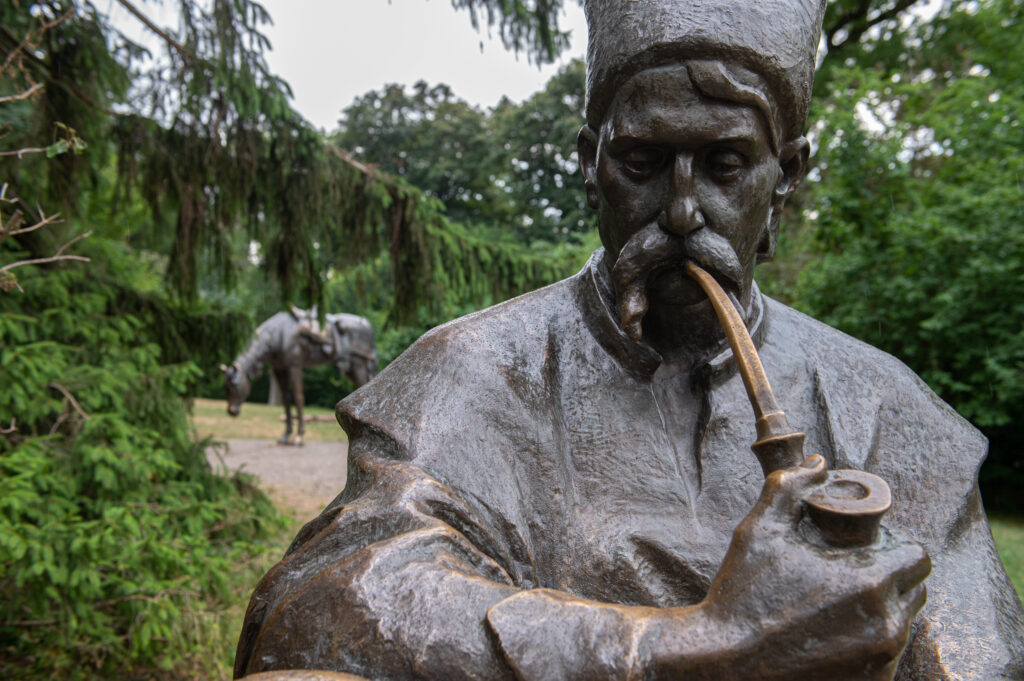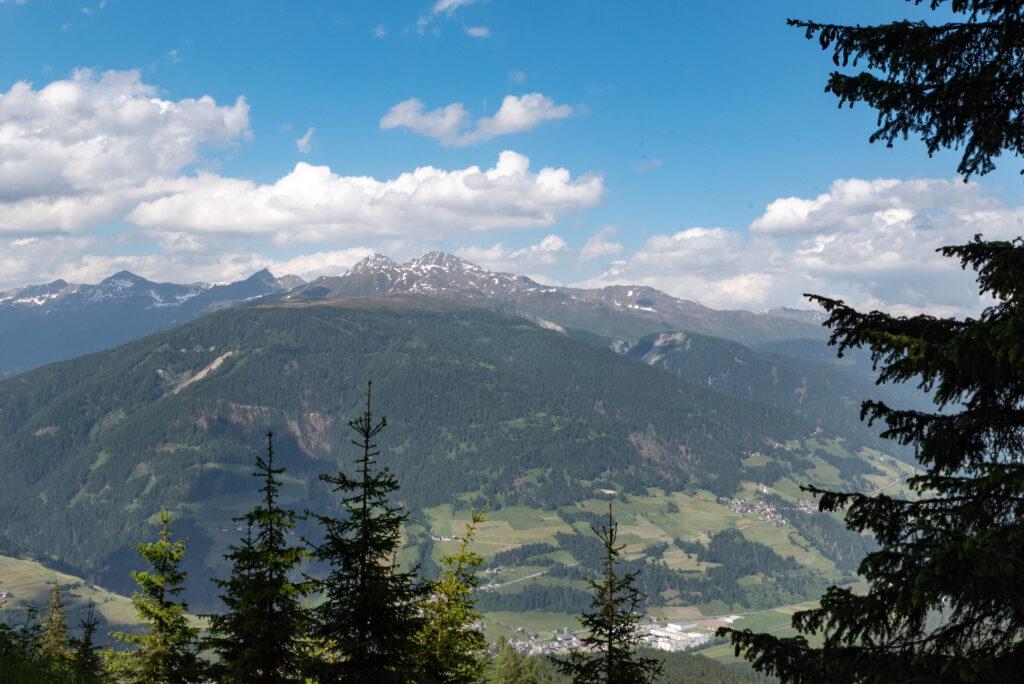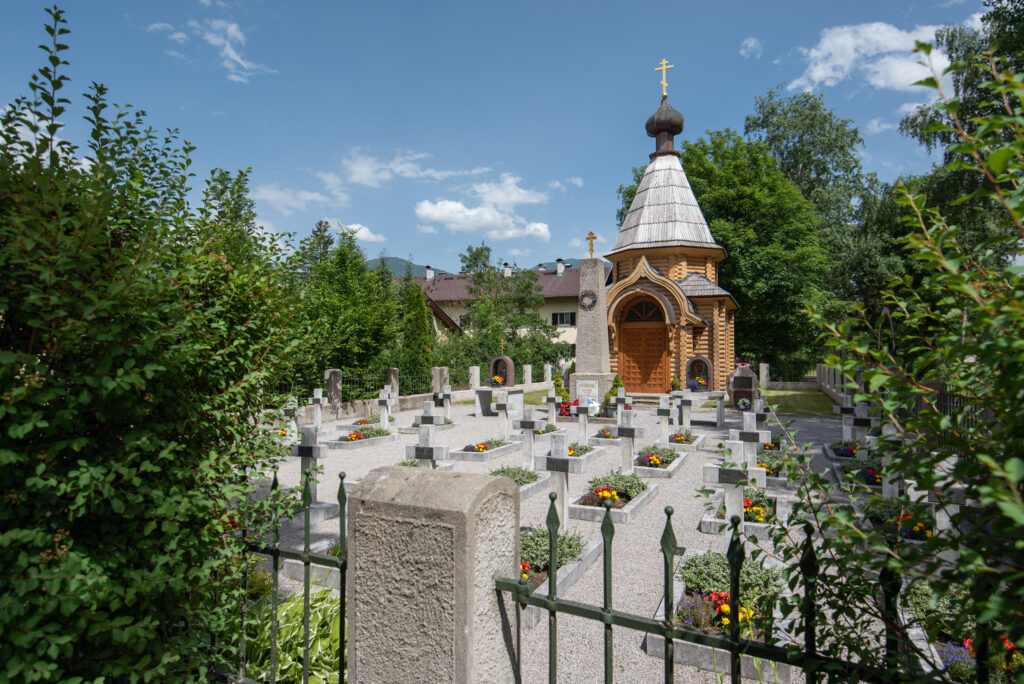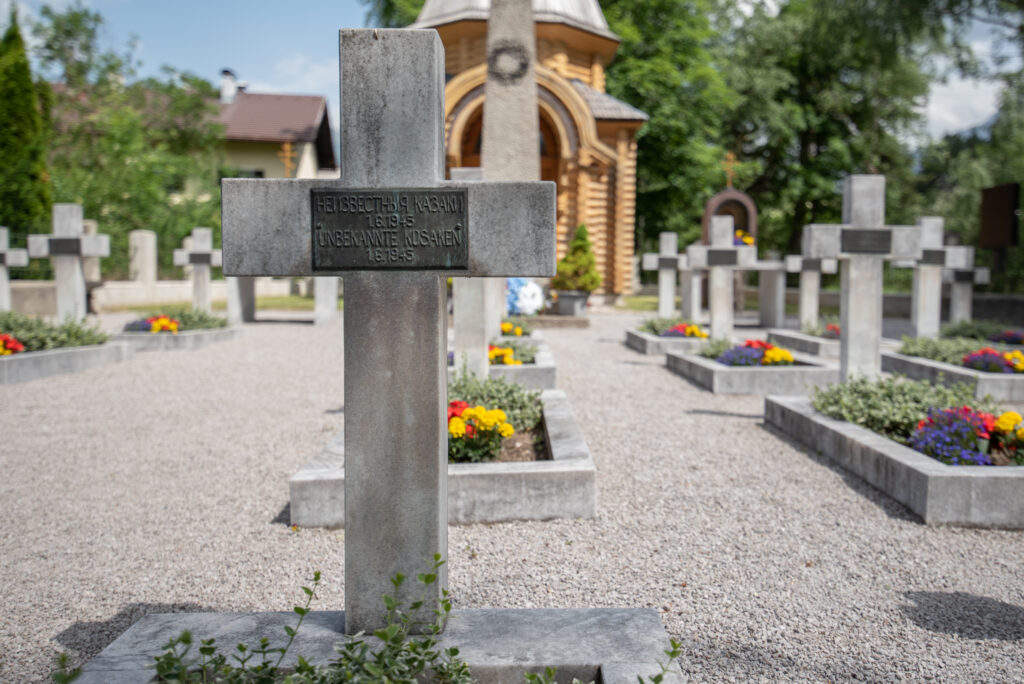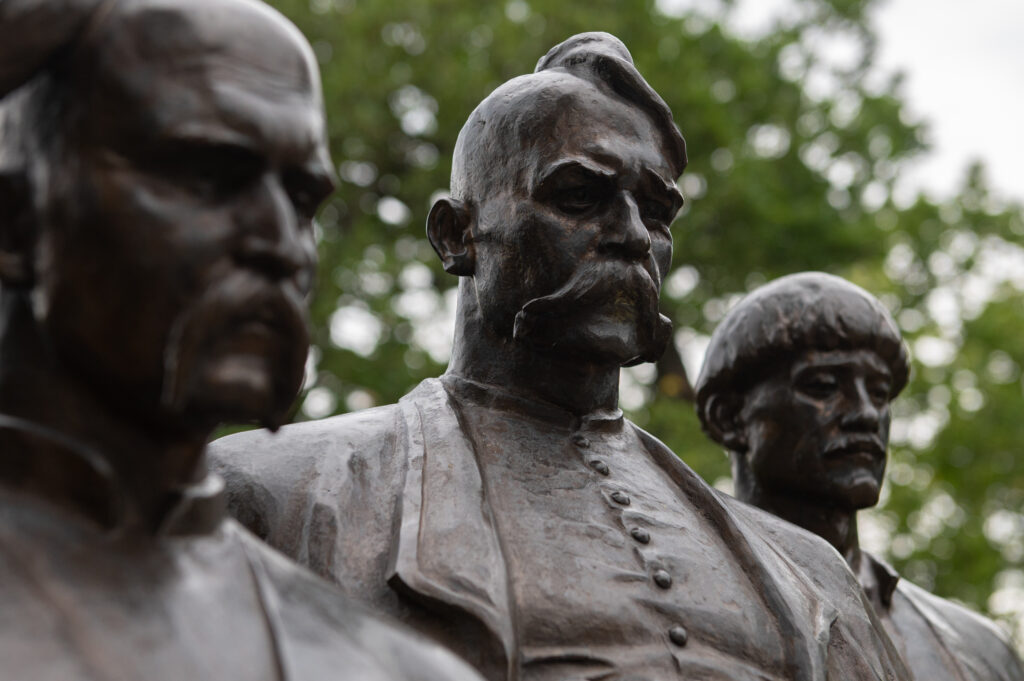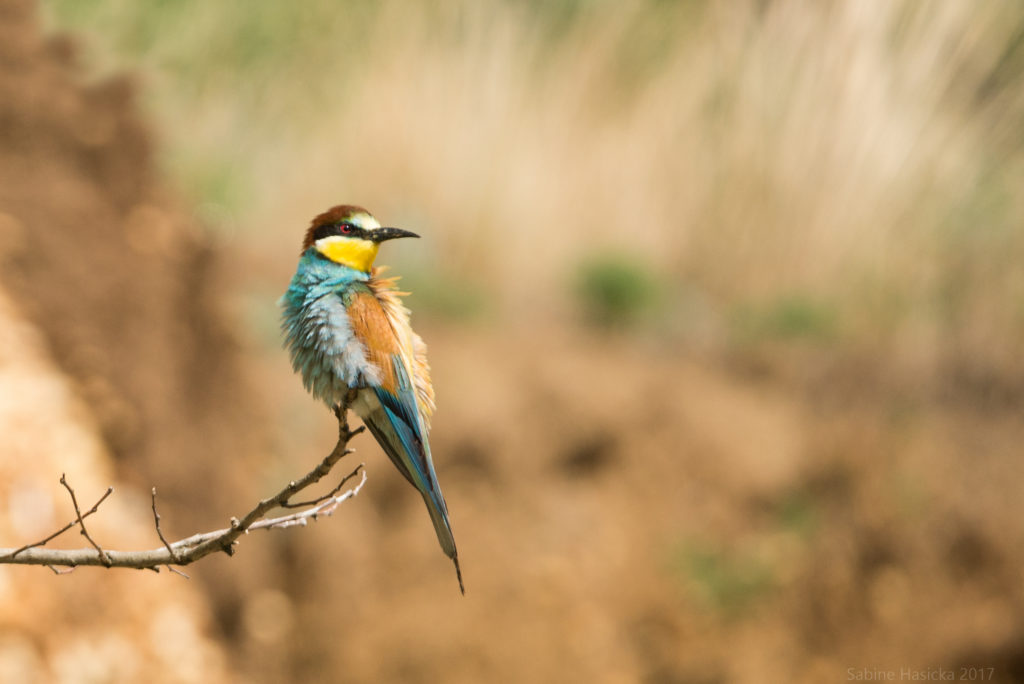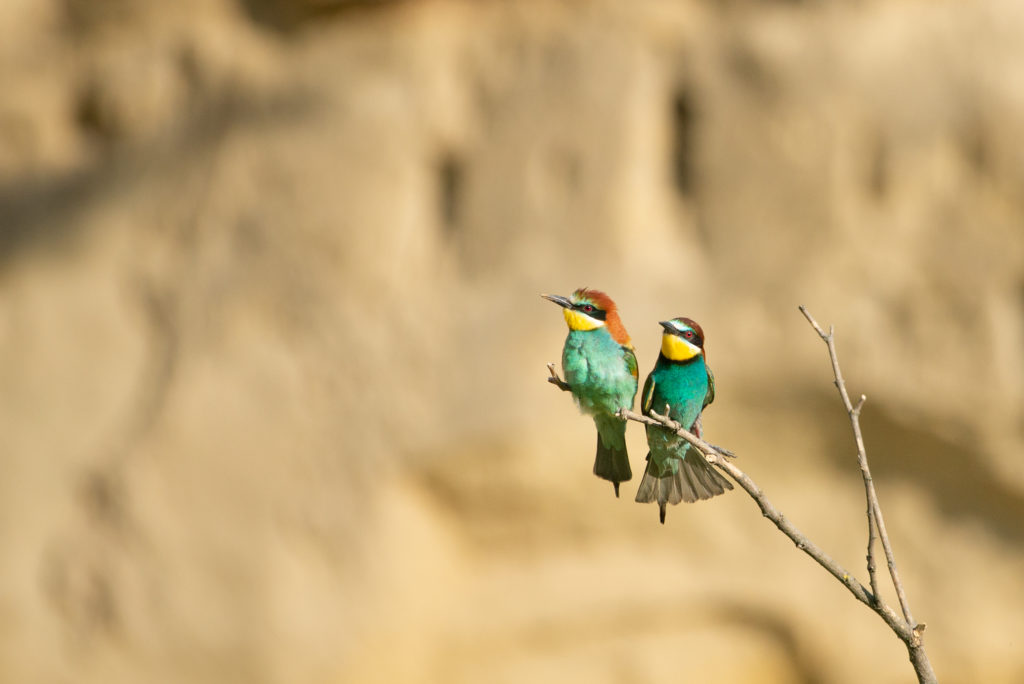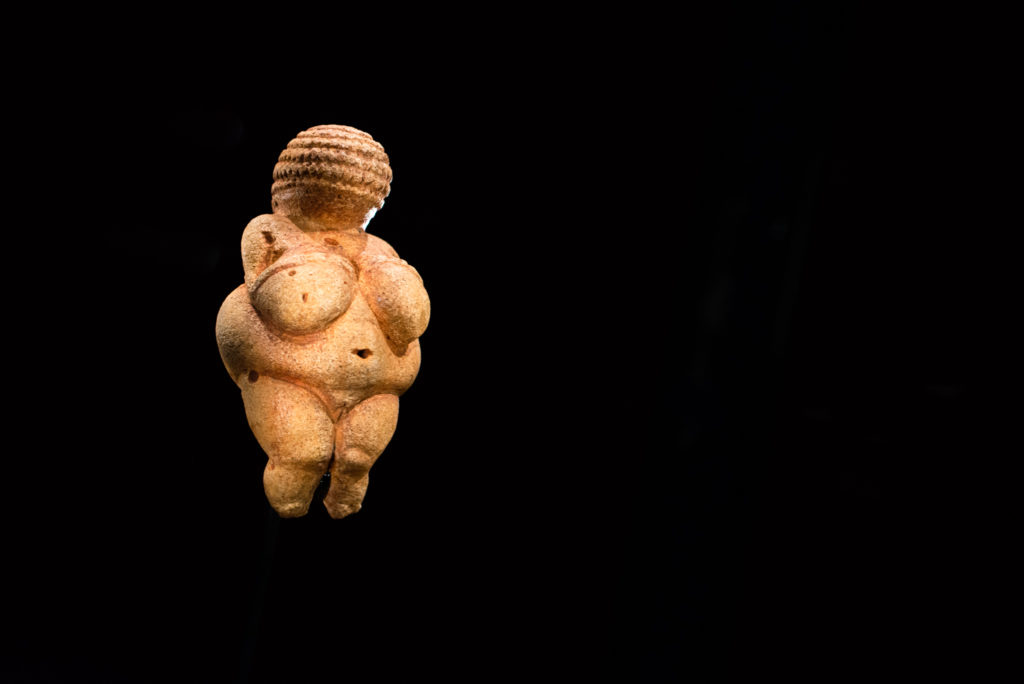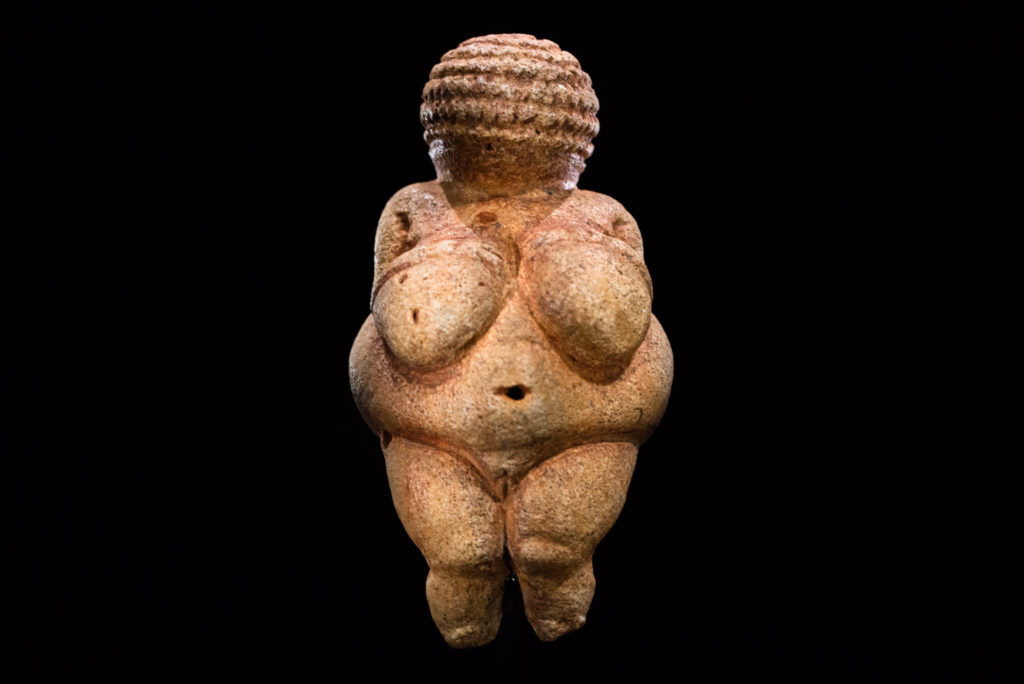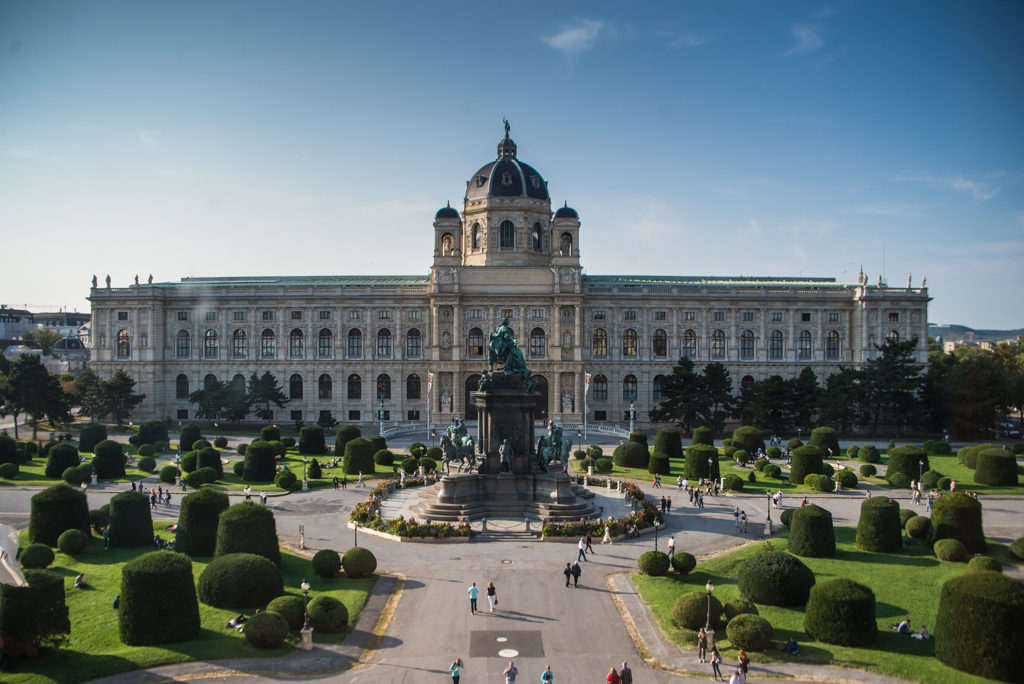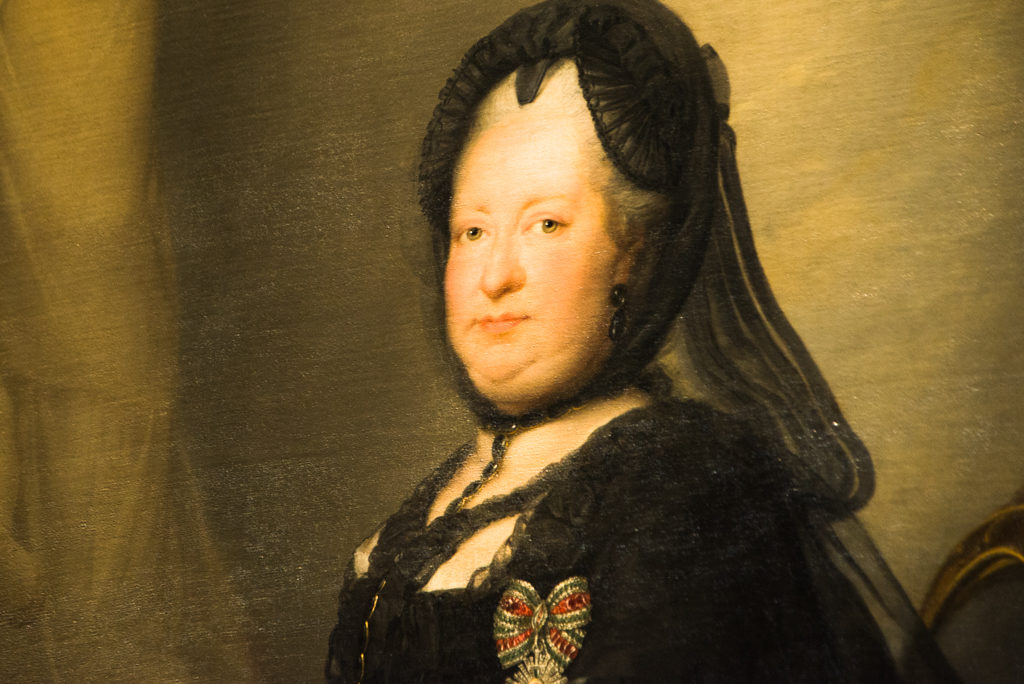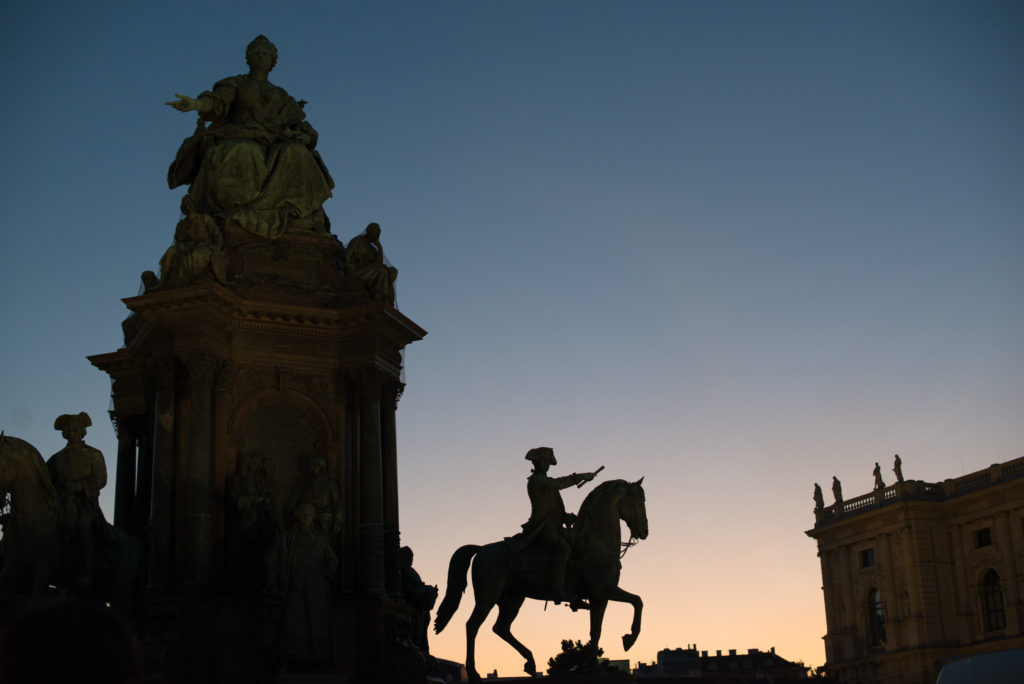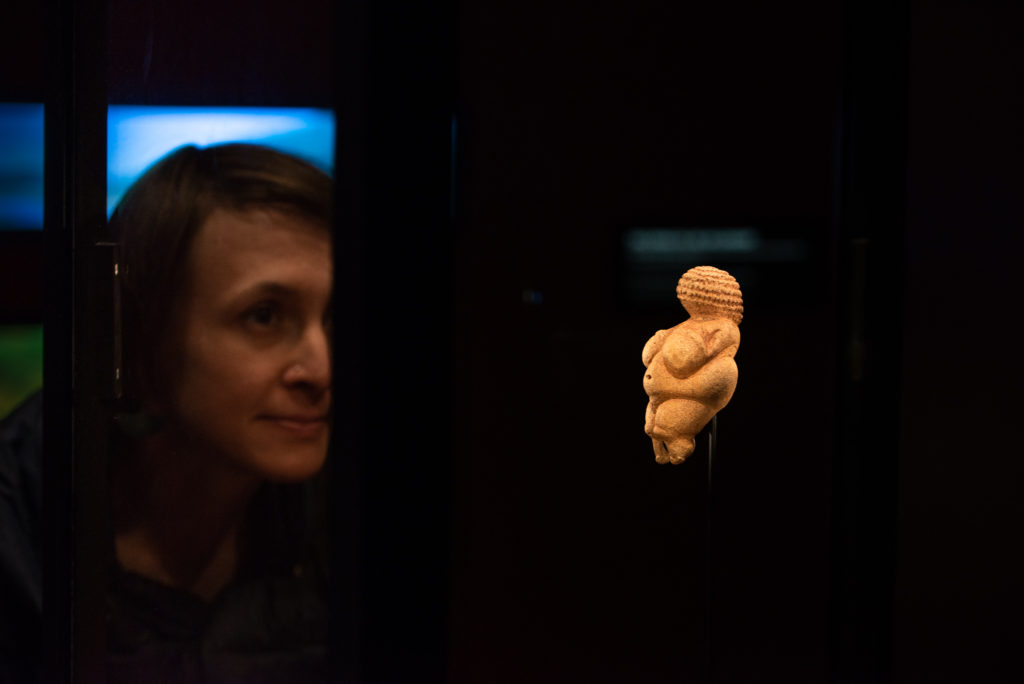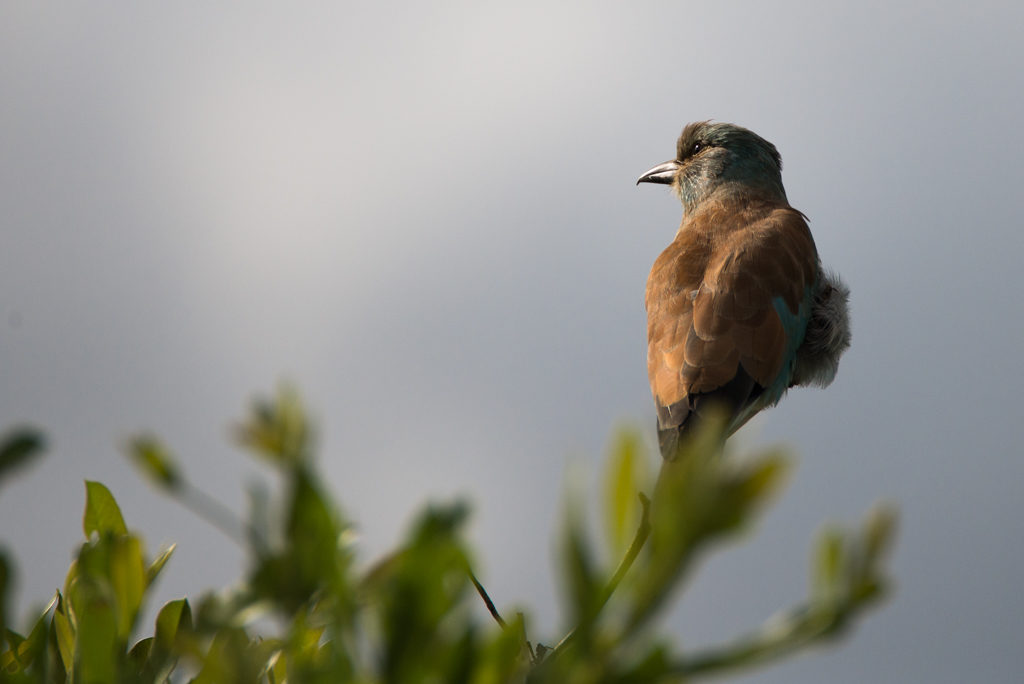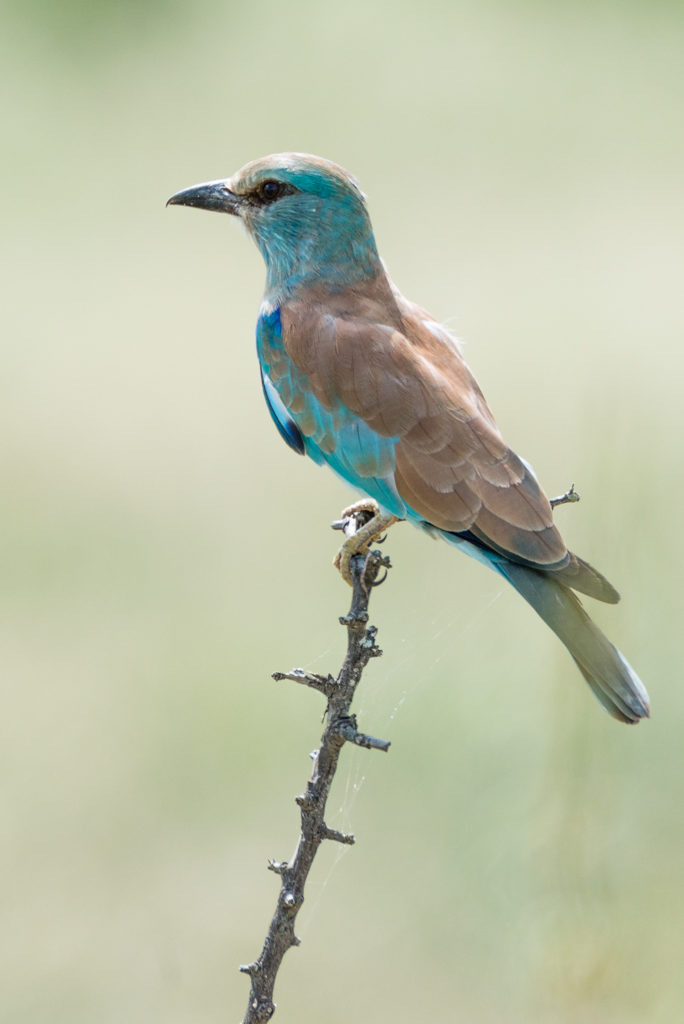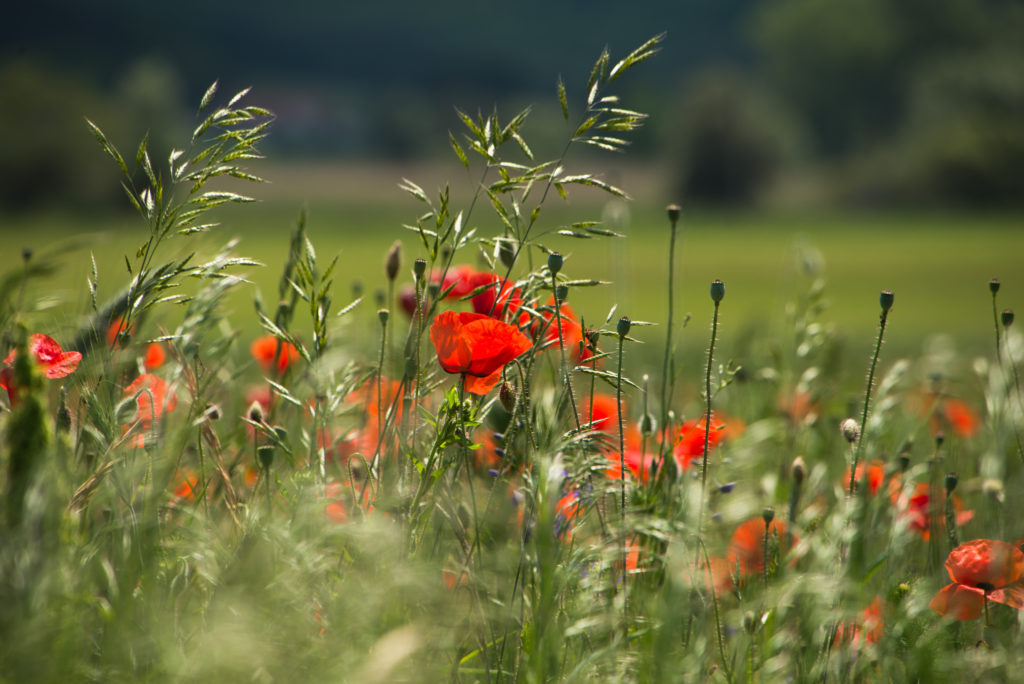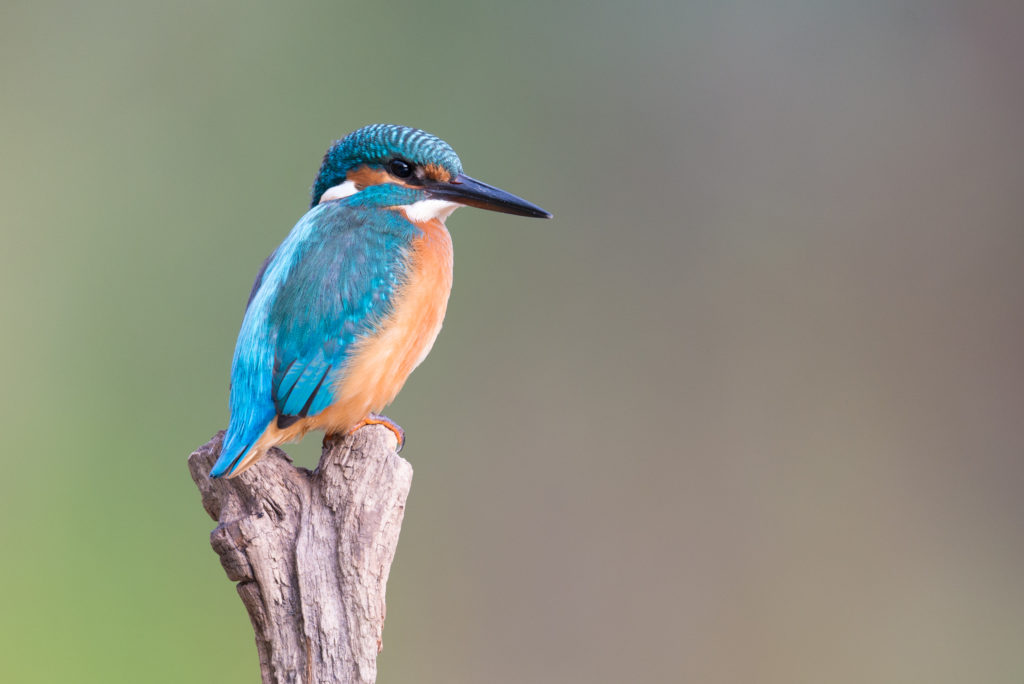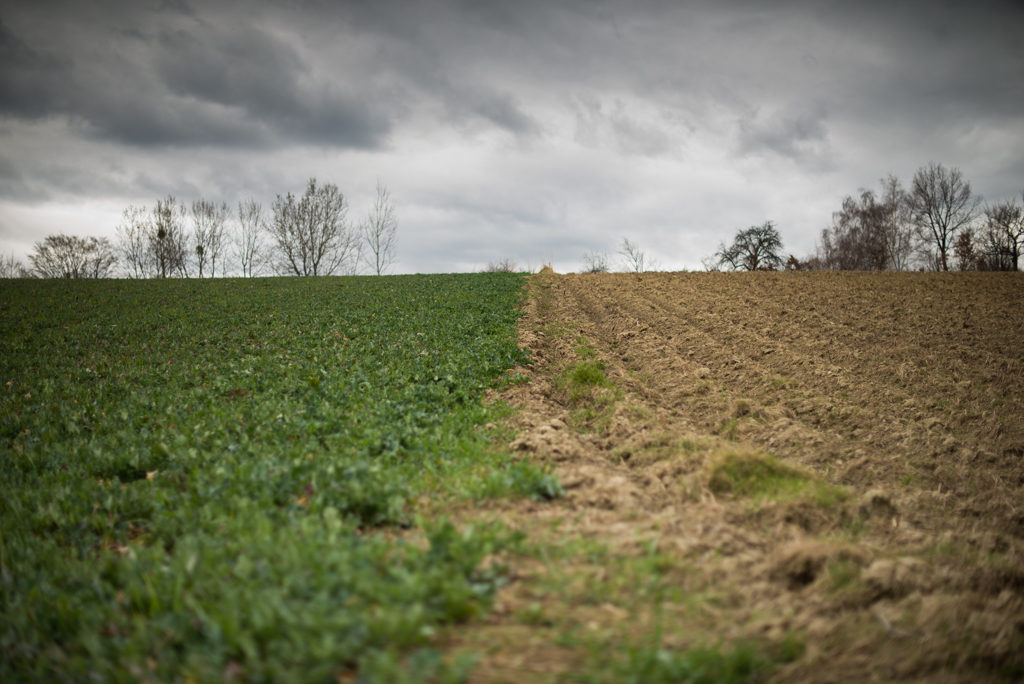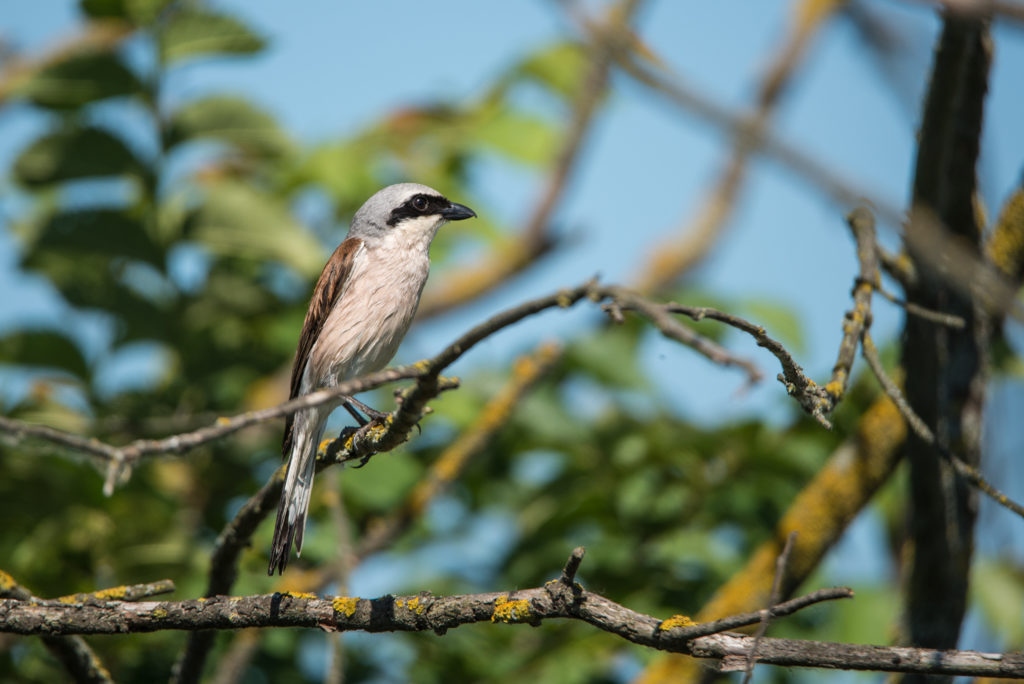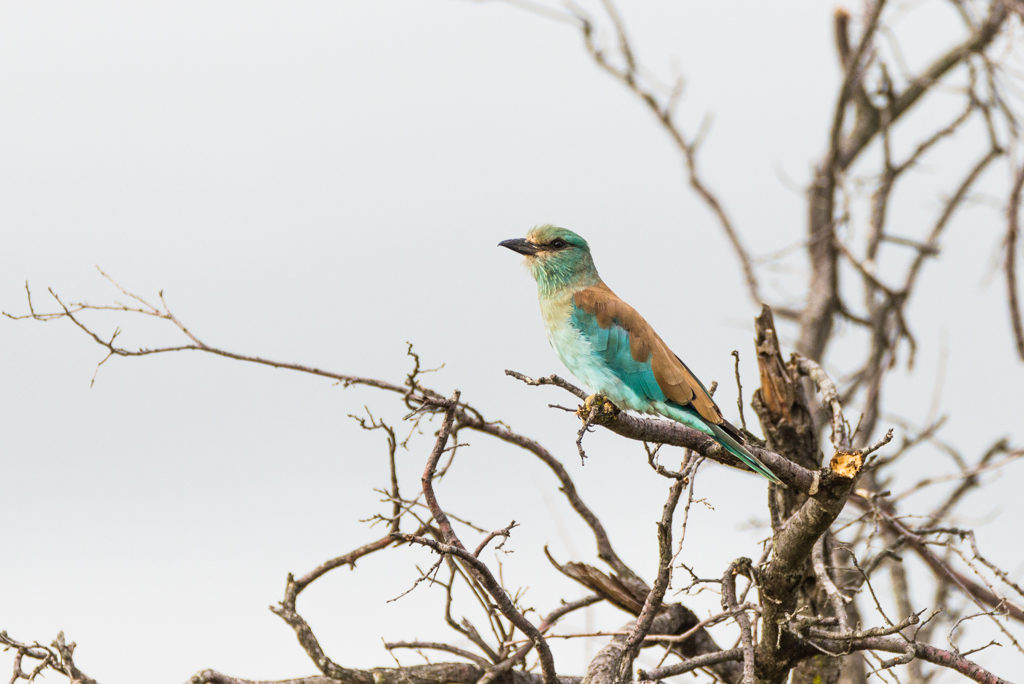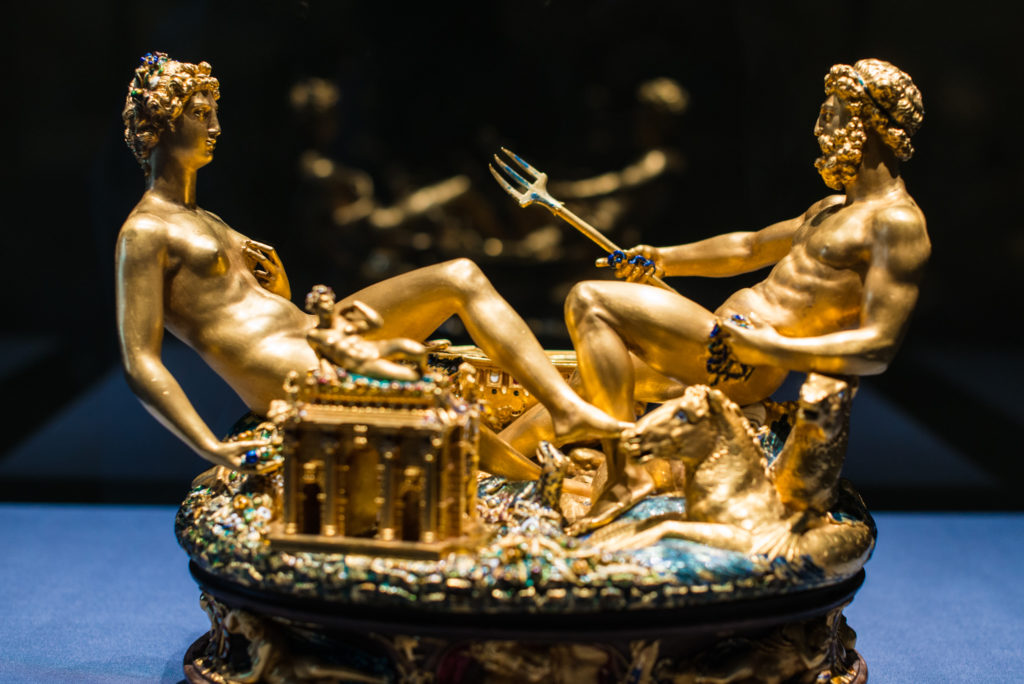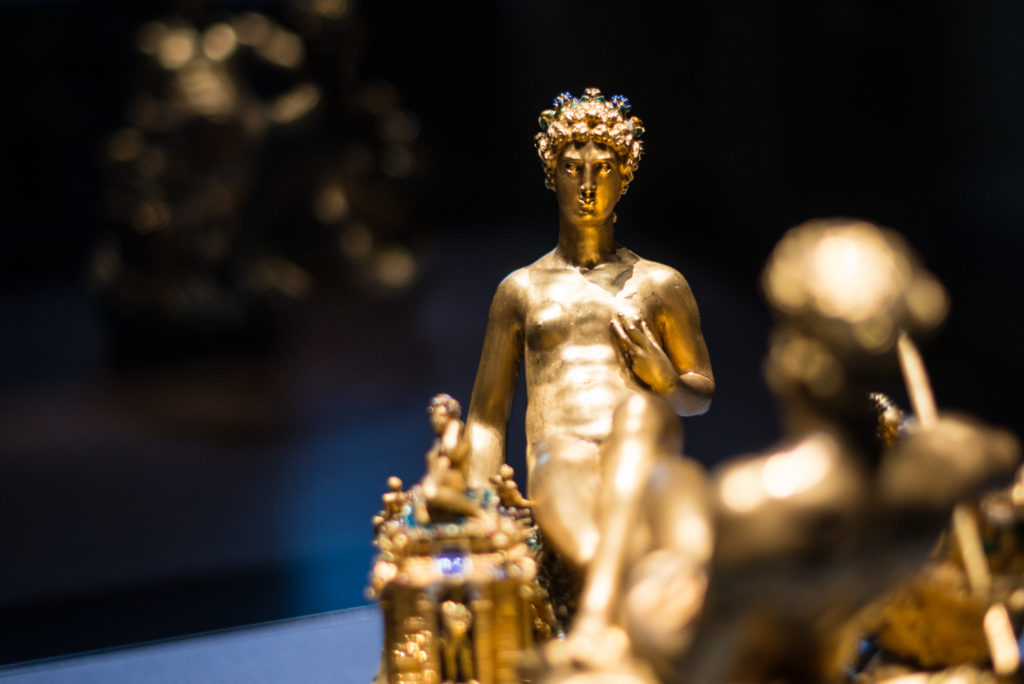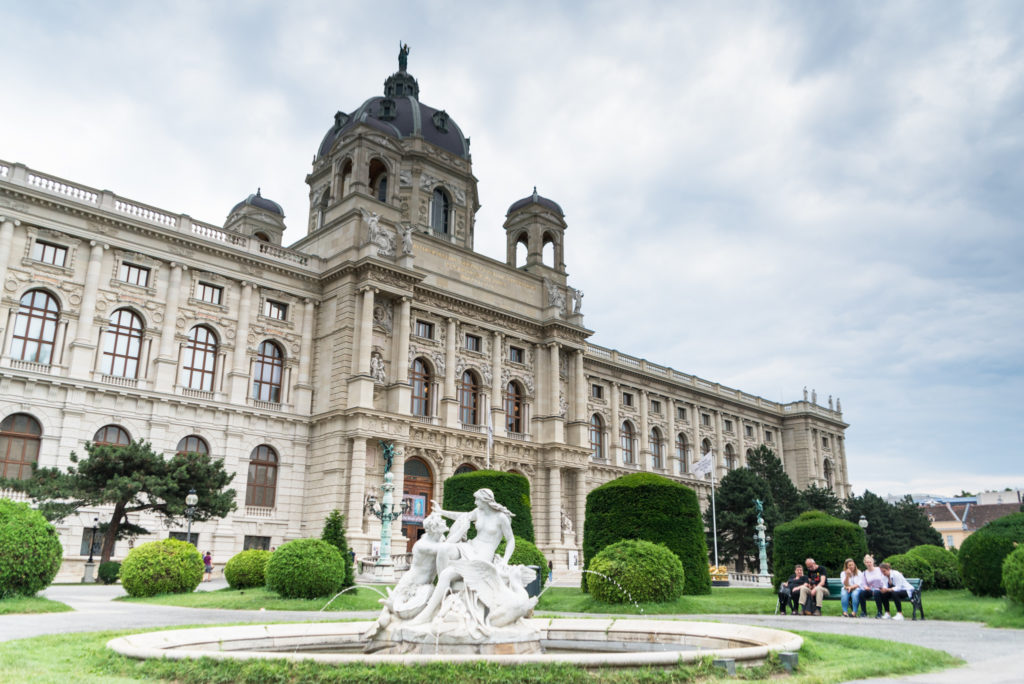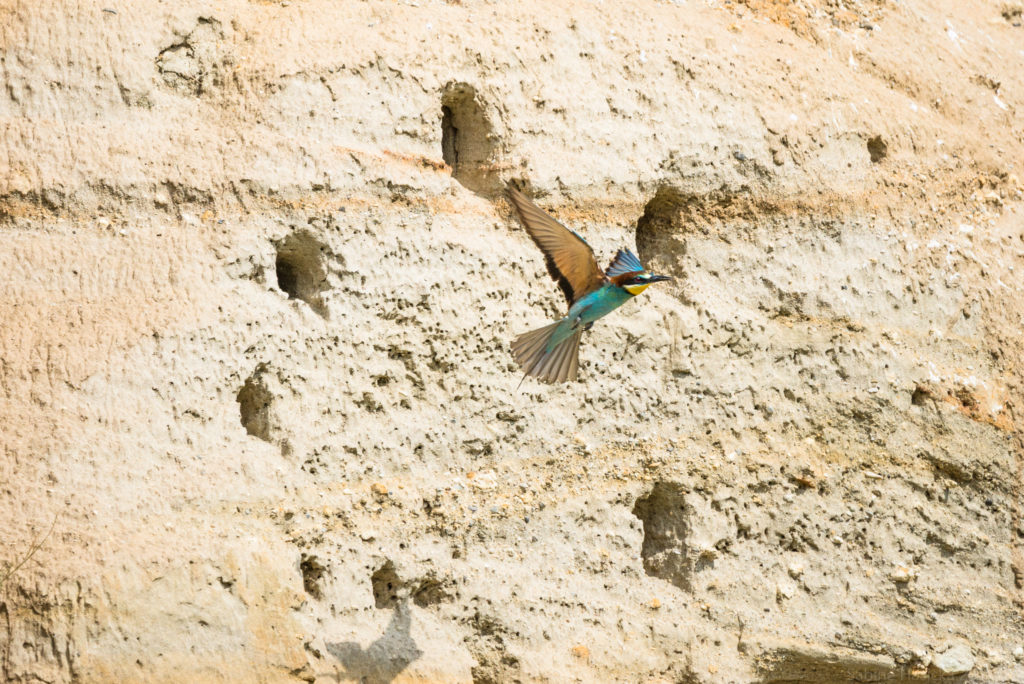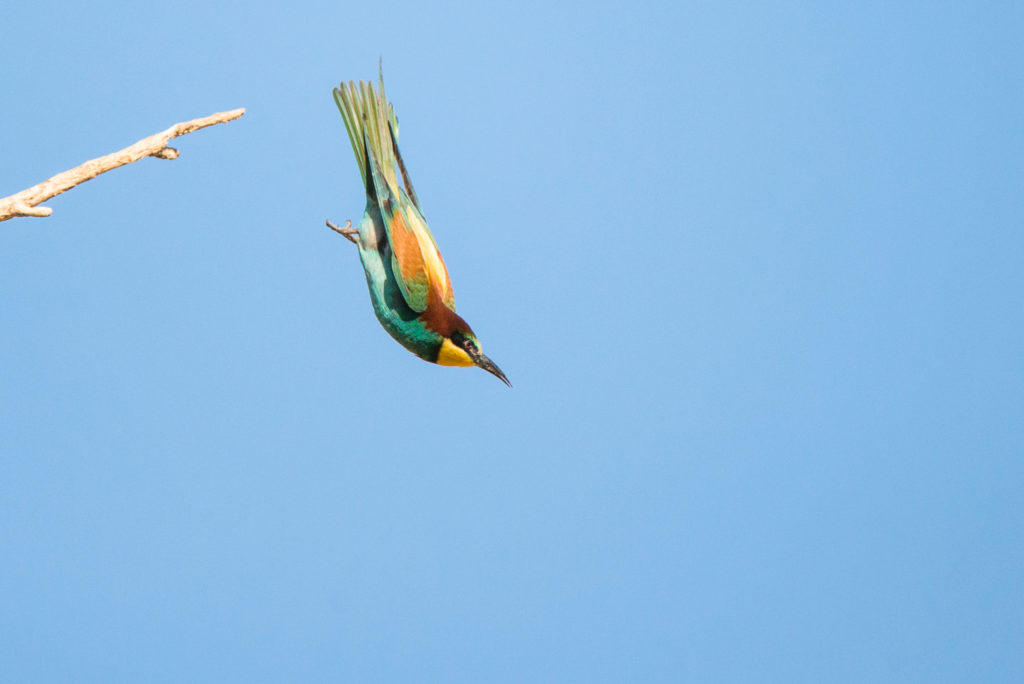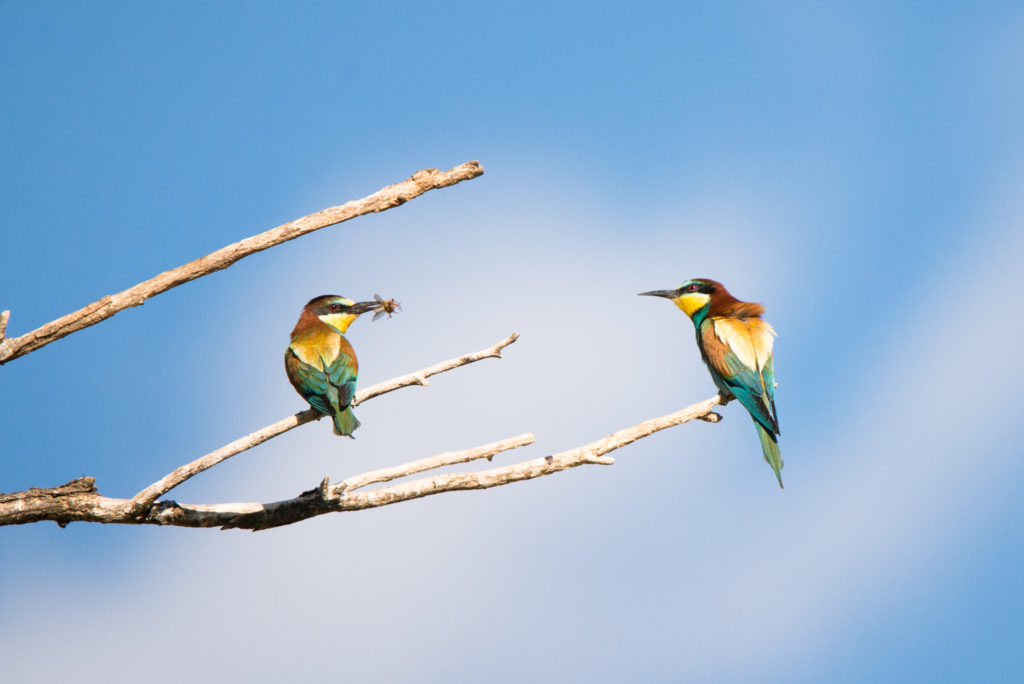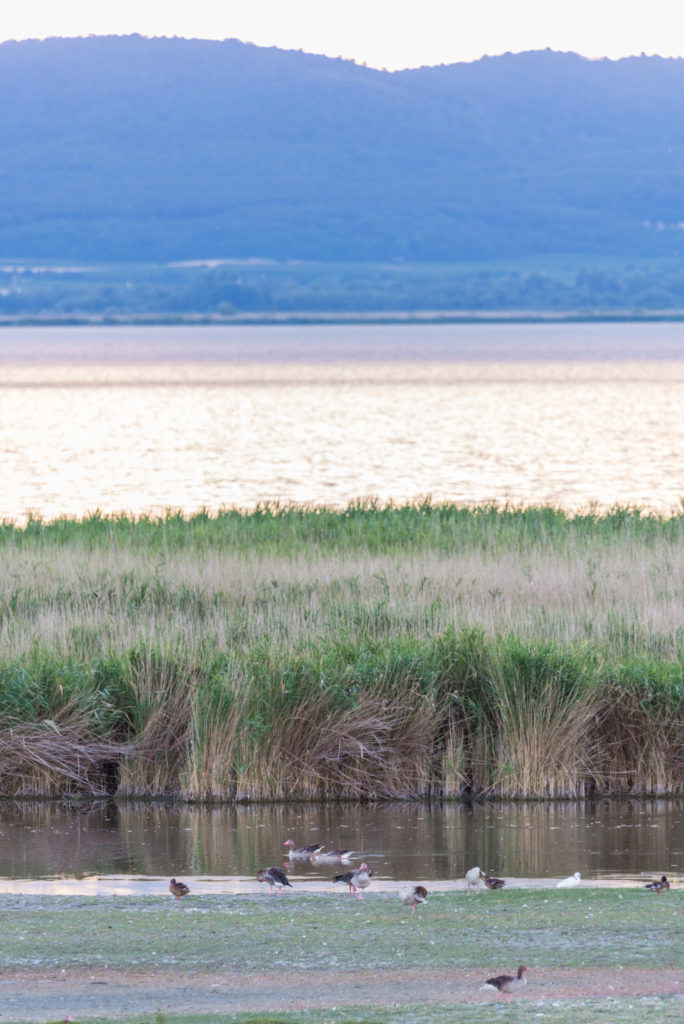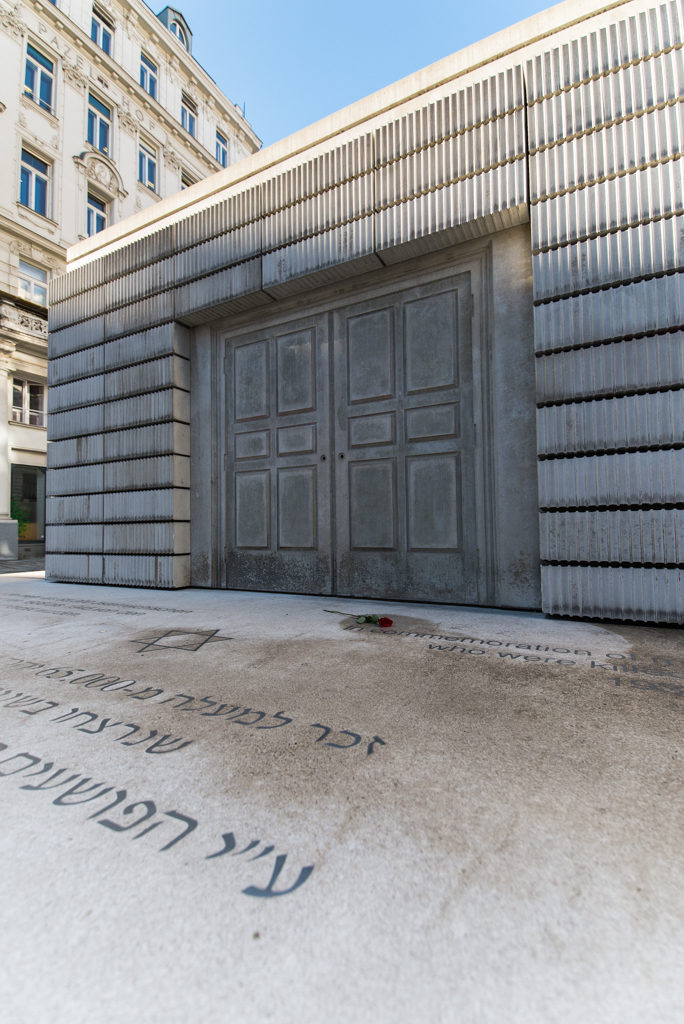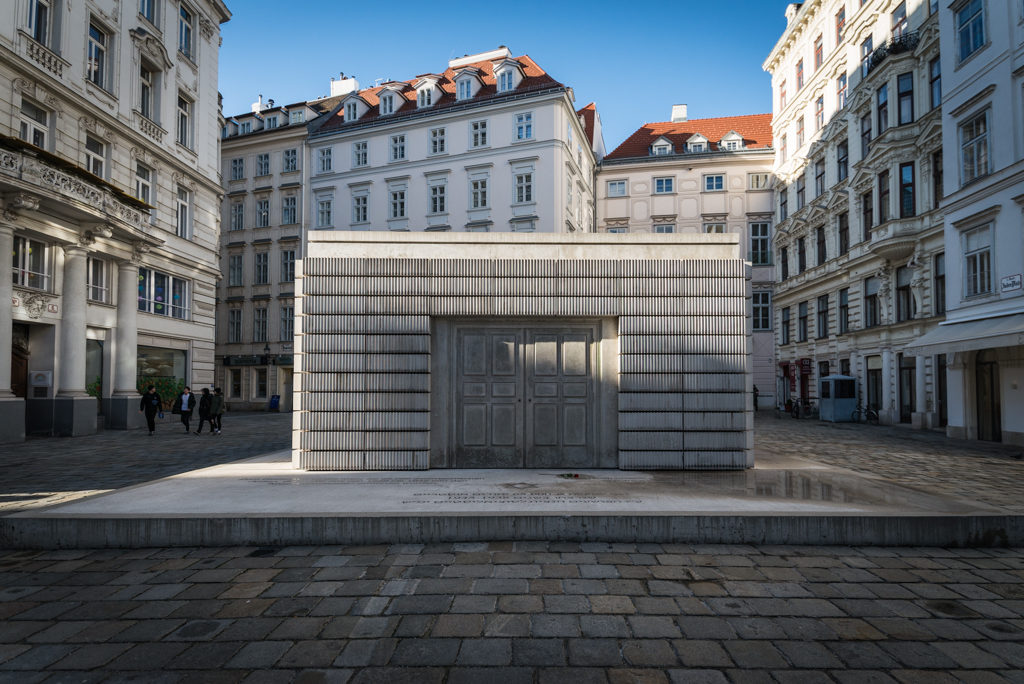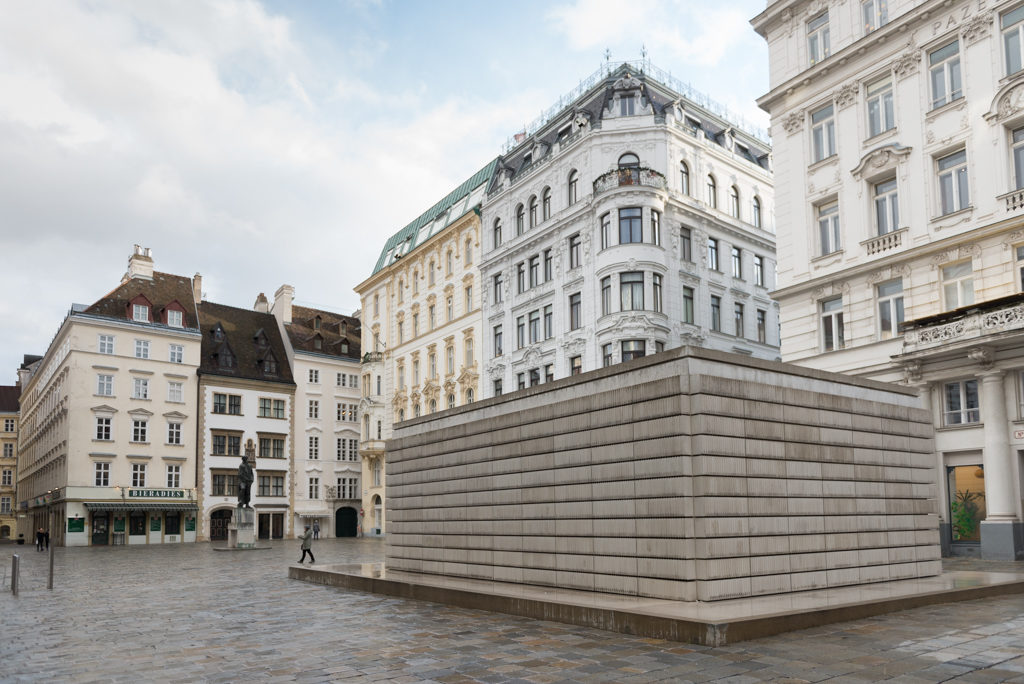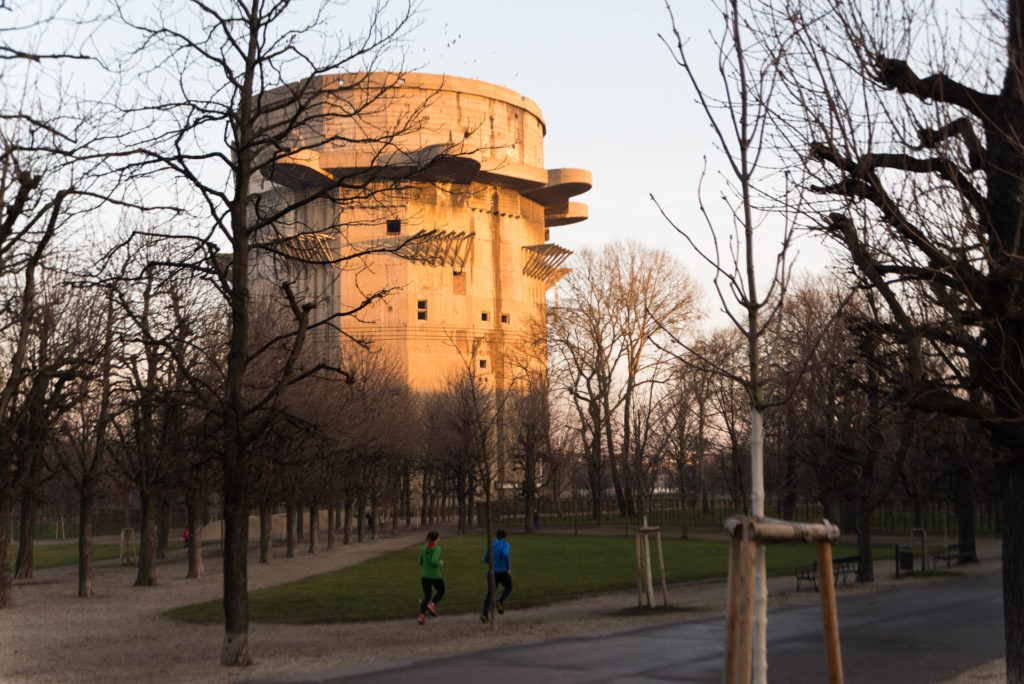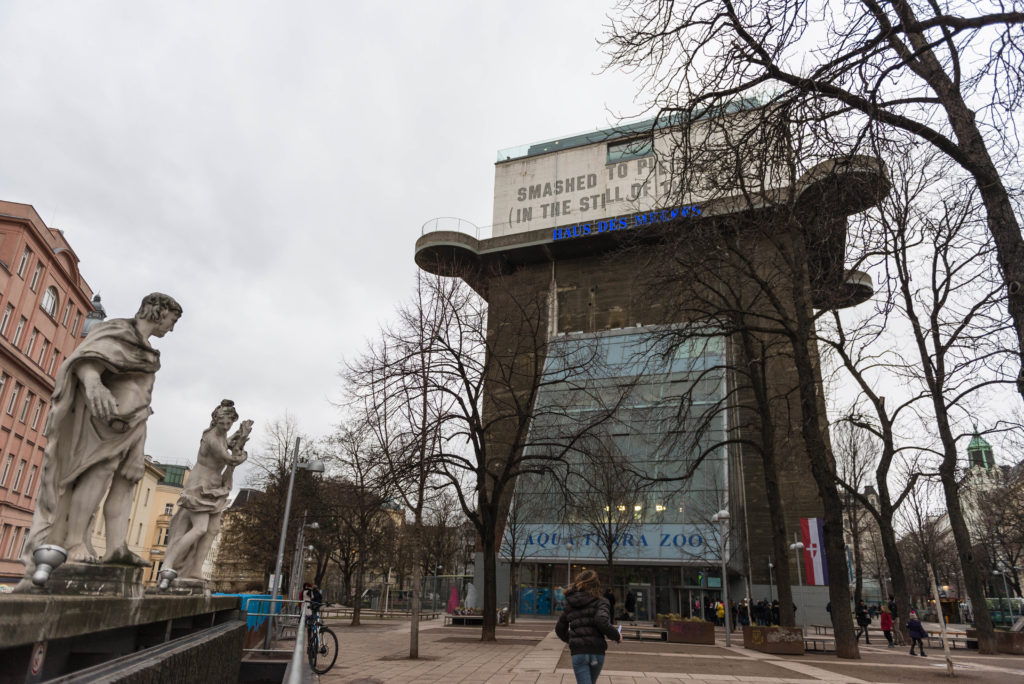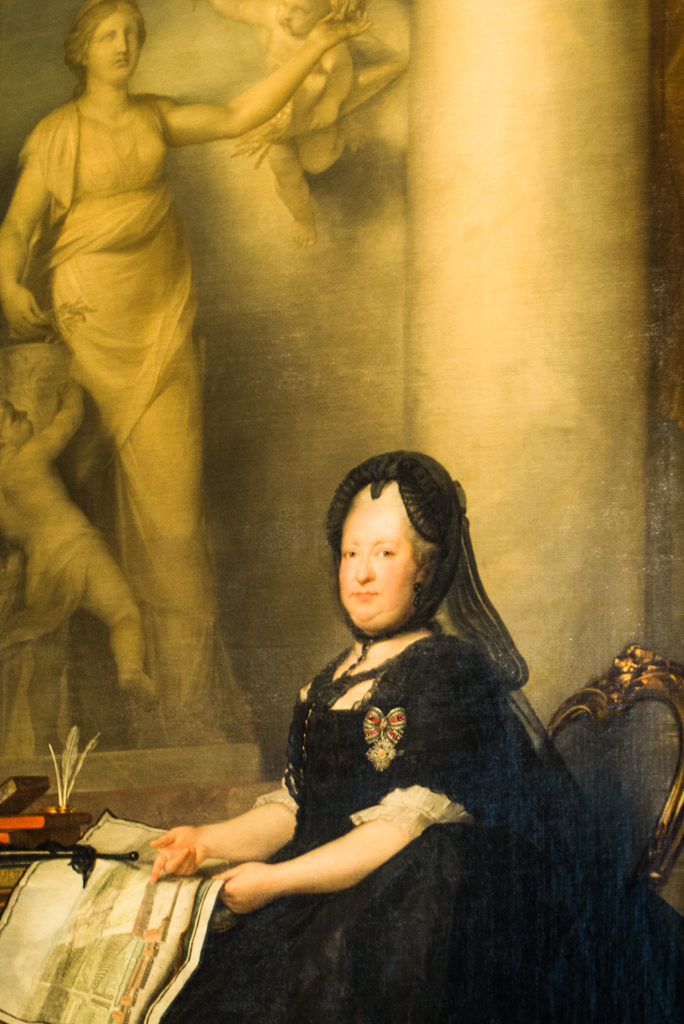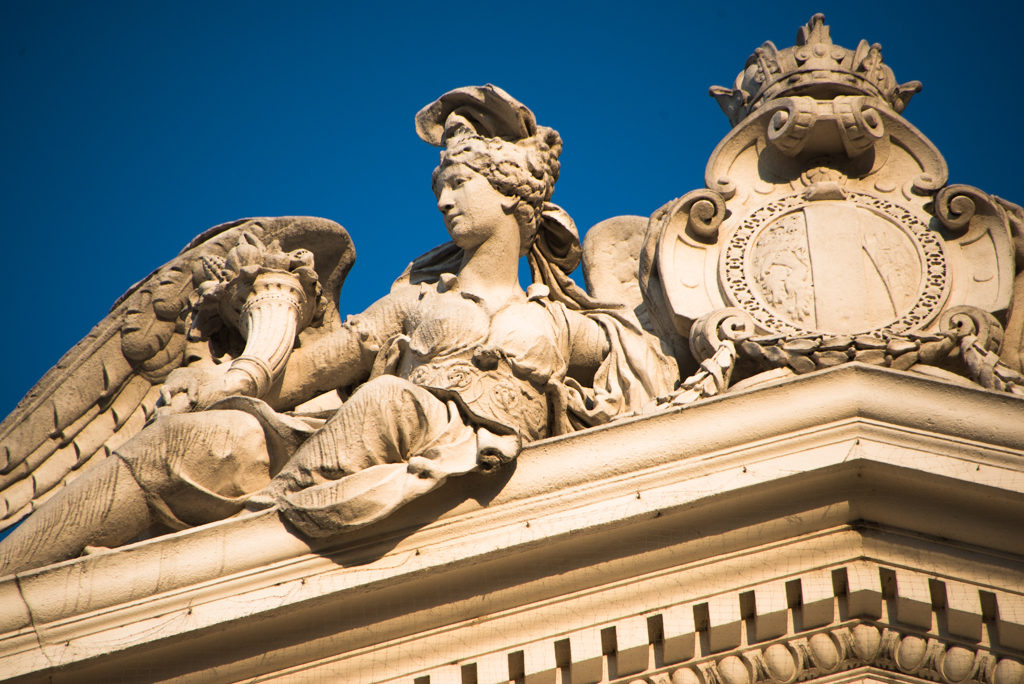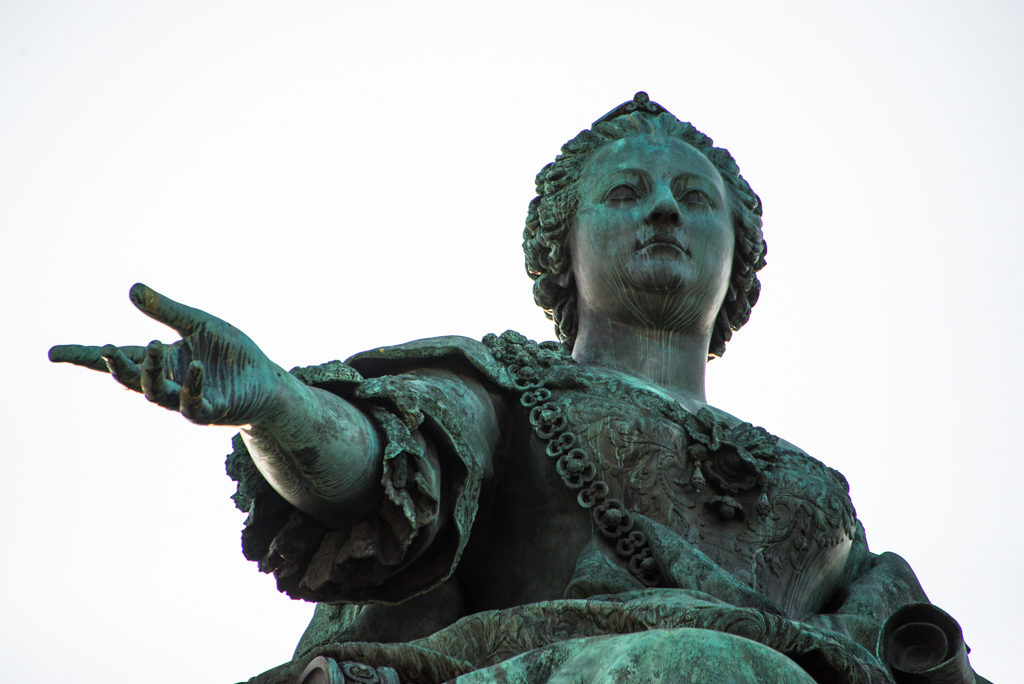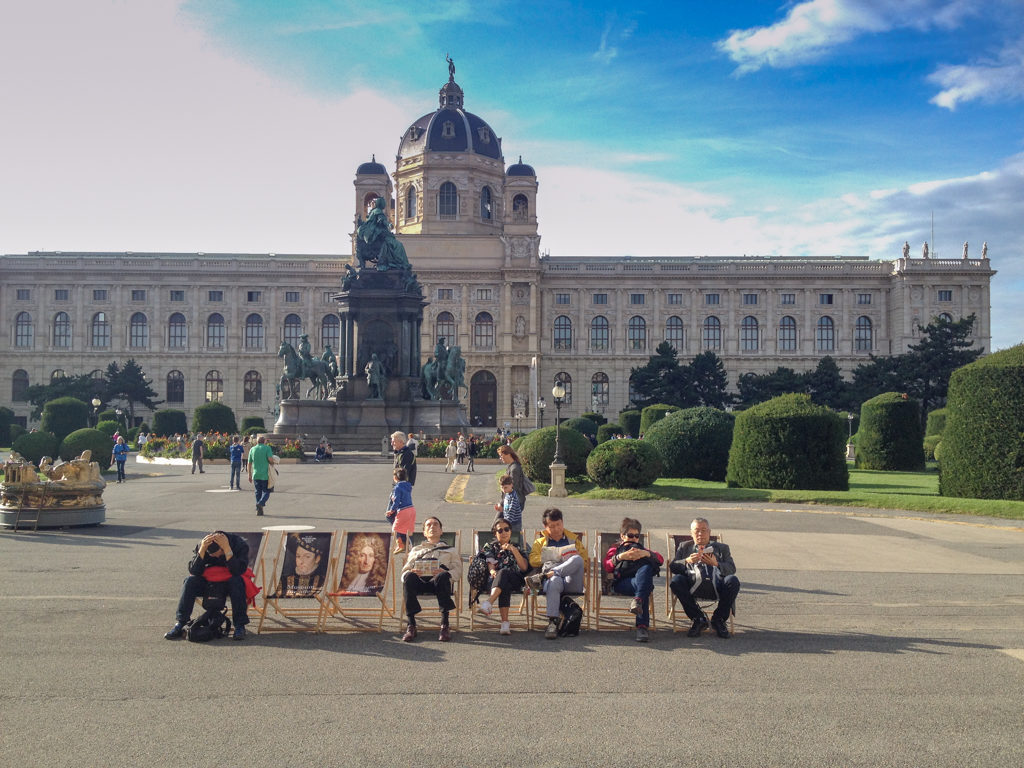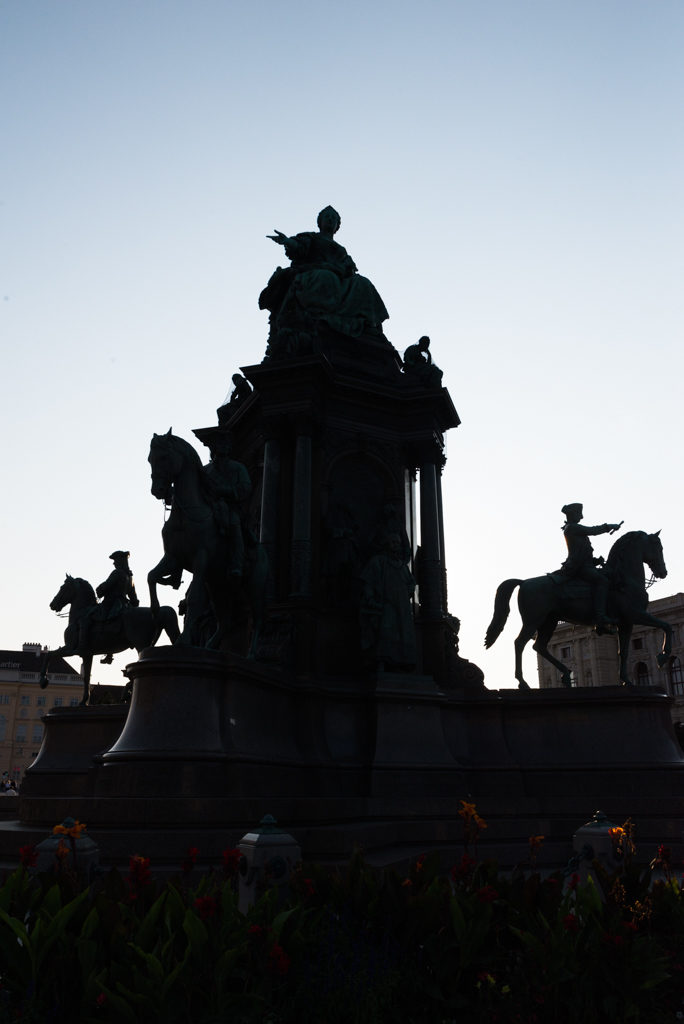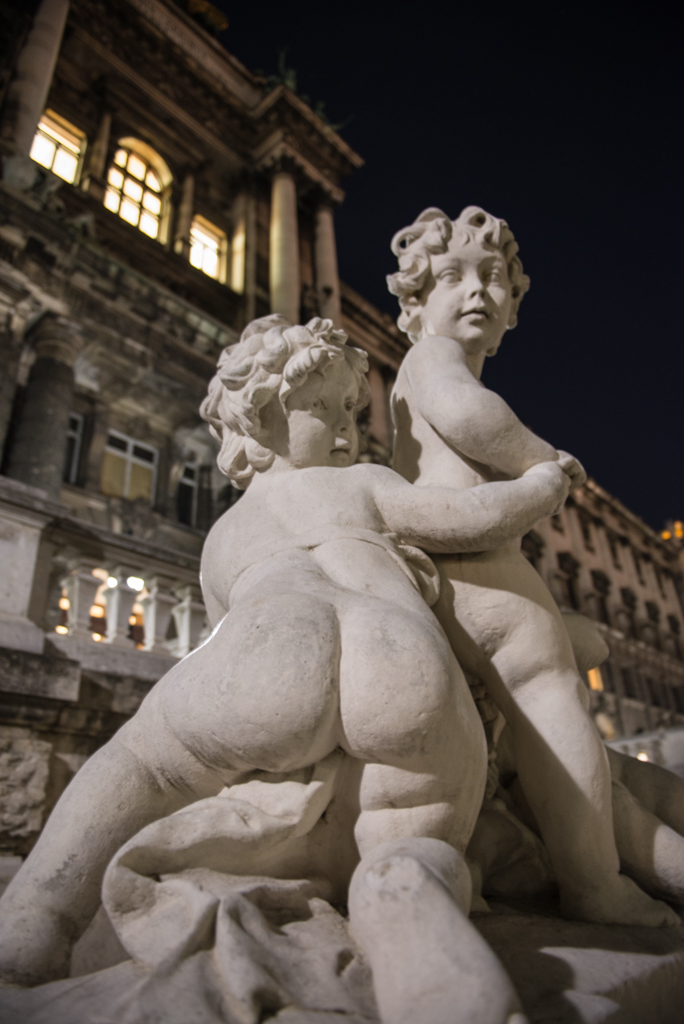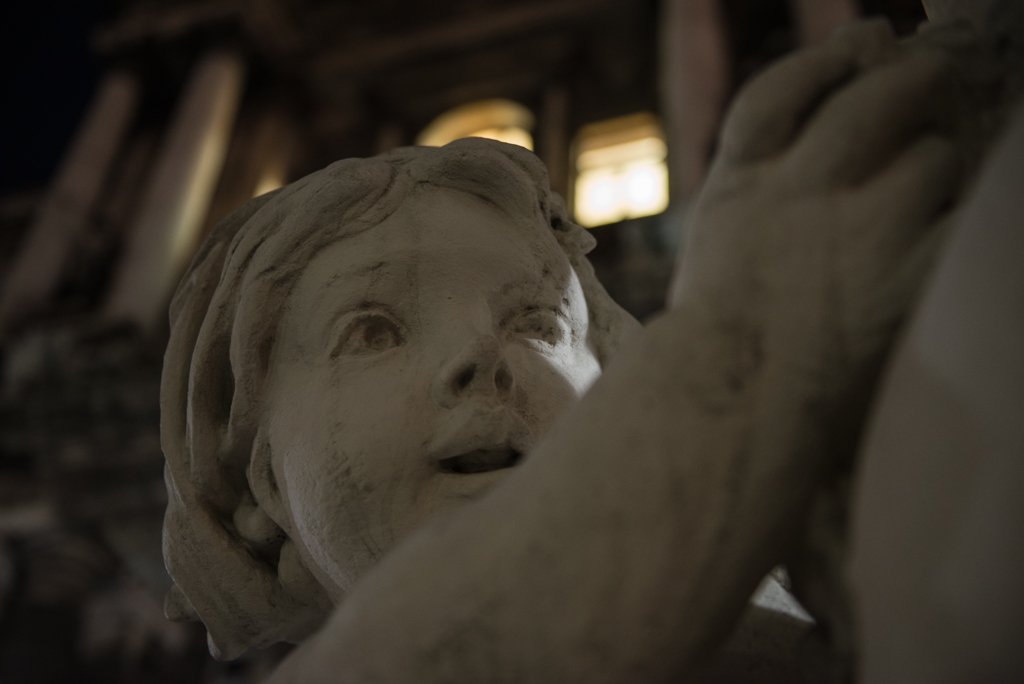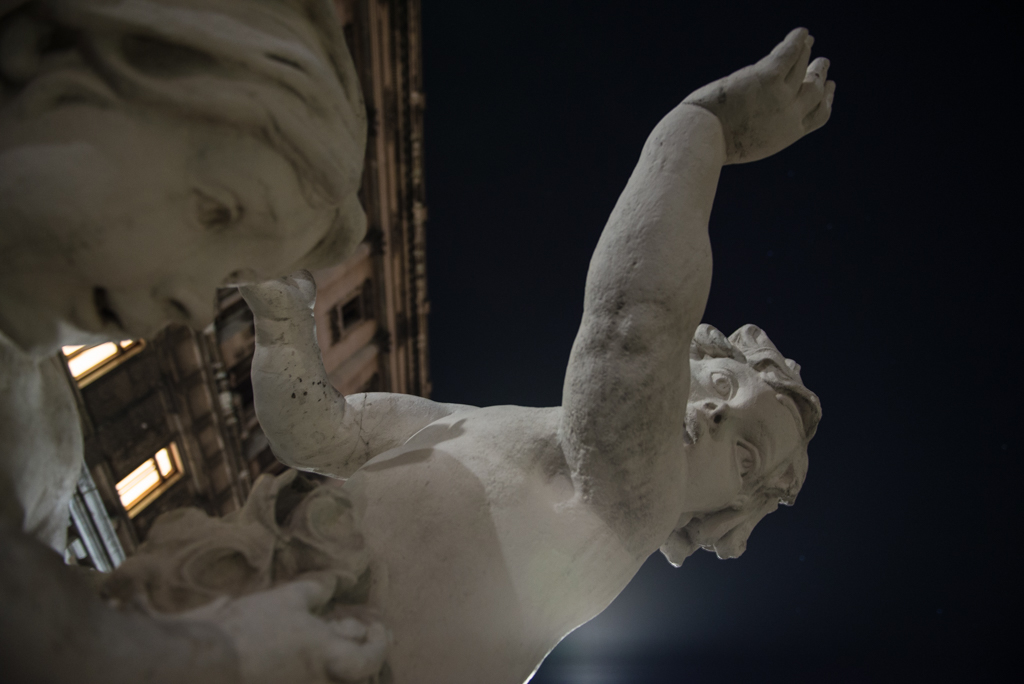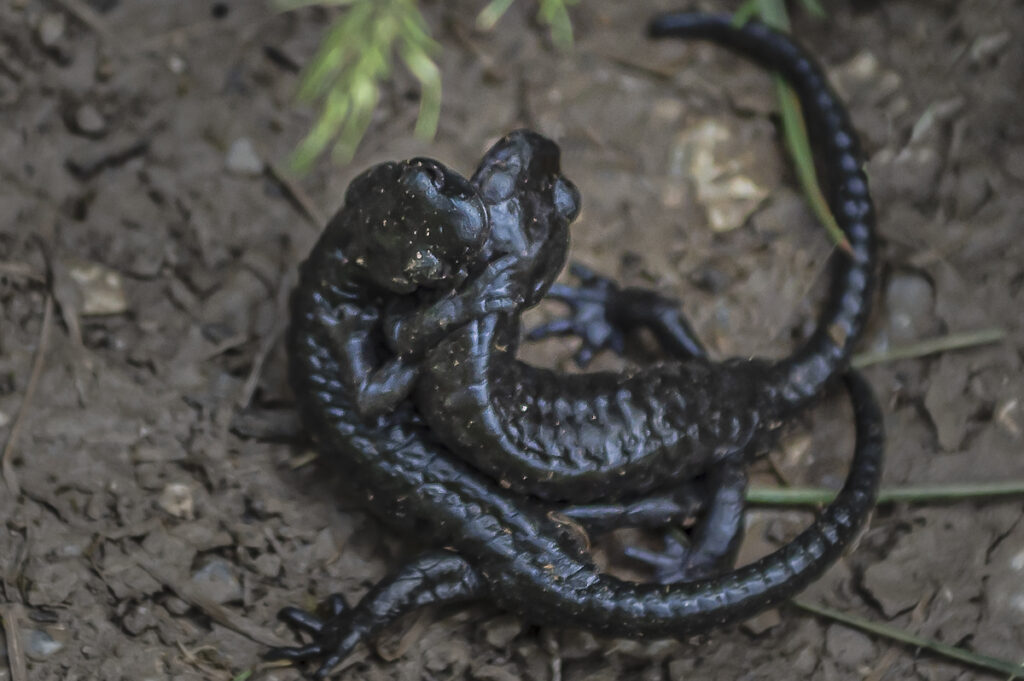
On the mountain top, two salamanders are making love. They are of the Alpine species, entirely dressed in black, including their large protruding eyes and their grinning, fleshy mouths. That and the fact that they are changing position so quickly, twirling each other’s bodies around, rubbing their heads against each other, entangling their long tails, holding on to each other with such fiery passion, make it impossible to tell them apart, male from female, or friend from foe: one could easily take their love making for a struggle for life and death, for they are not on a flowery meadow, but inside an old war trench.
The mountain peak, Kleiner Pal, constitutes the border between Austria and Italy. During WWI, it was part of the frontline, where the two armies of the new Republic of Italy and the old Austro-Hungarian Empire held each other in a tight grip, from May 1915 till the end of the war in November 1918, without ever changing the frontline, without having any effect on the outcome of WWI, but at the tremendous cost of the lives of almost a million soldiers. Austrians, Italians, Germans, Czechs, Hungarians, and many more unknown soldiers, now lie buried at the various Heldenfriedhöfe, or under the eternal ice of the Alpine glaciers.
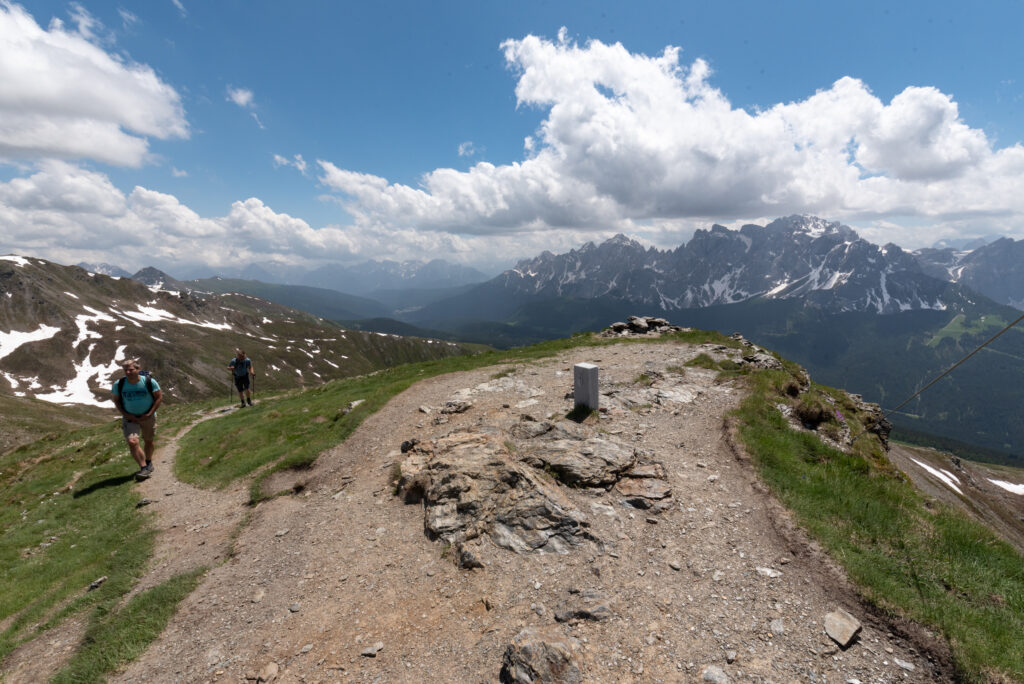
Before WWI, the so-called Karnische Alpen, a mountain ridge between Italy and Austria, were a popular hiking destination, as it is now again. The terrain is steep and demanding, the mountain tops a challenge for the experienced hikers and climbers. In the peaceful tranquillity of high peaks and (seemingly) pristine ice-blue lakes it is hard to imagine the smoke and rumble of mortars, of shooting and shelling from a century ago. And yet, trekking by the exuberant pink shrubs of blooming Alpine roses, along the well-maintained hiking paths, one frequently comes across dilapidated garrisons, trenches, or dug out caves that once functioned as barracks, as shelters, as loopholes, or as storage spaces. The hiking paths, now called Friedenswege – trails of peace – were in fact trodden into the steep terrain as a military supply line, where horses pulled ammunition, food, and equipment to the trenches on the top. Until the horses died from cold and hunger, and were replaced by cable cars, quickly built by night, often under hostile fire. From then on, only soldiers marched along the paths.
This Southern stretch of the Alps was one of the most brutal and inhuman battlefields of modern European history. Covered with snow for three quarters of the year, sometimes more, it is a terrain so tricky and precarious that one third of the soldiers there died not from enemy attacks, but from natural causes: avalanches and mountain slides, and the freezing cold that brought pneumonia or kidney inflammation.

“Any soldier’s worth less than an animal.”
Infantry soldier Karl Außenhofer wrote into his diary (published in 2016). A Tyrolean, he felt home in the mountains, but he suffered from malnutrition – by 1918, the average weight of the Austrian soldiers was 55kg – and inadequate outfits. Uniforms were of a heavy fabric that, once wet, dried slowly; with Italian attacks imminent, the soldiers at the frontline were ordered to sleep with their clothes on.
“Undressed for the first time in three months tonight. Couldn’t sleep from the pleasure…” Karl Außenhofer wrote. The soldiers were also ordered not to scratch their itches, to prevent infections and skin diseases. In vain.
The Habsburg monarchy had not been prepared for a war. Their weaponry was technically outdated. The turn of the century had brought technical innovations – industrialization and motorization – but outside its glamorous capital Vienna, the Austro-Hungarian Empire was still an agricultural economy, a Catholic, authoritarian monarchy, stuck in the past. Yet, Emperor Franz Joseph had rushed into the war in megalomania and bloodlust. The assassination of Arc-duke Franz Ferdinand in Sarajevo by a Serb was a mere pretence to declare war on Serbia. The Vielvölkerstaat – the multi-ethnic empire – had long been troubled by rising tensions among the many peoples of the vast, sprawling empire. Now, the Kaiser wanted to deal with nationalistic, emancipatory tendencies once and for all in a short hit-and-run attack on a minor South Eastern neighbour.
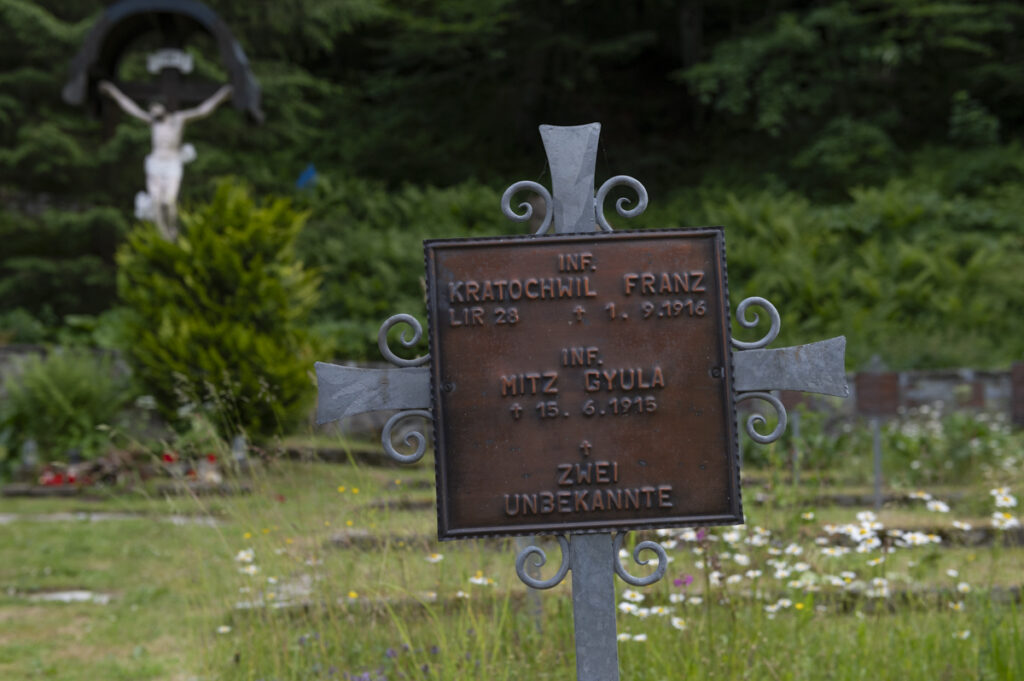
“I caught lice from the Galicians,” Außenhofer wrote in his diary.
Ironically, in the trenches the different nationalities were for once united. But even in the face of death the tensions didn’t subside. Too long had prejudices been instilled into the minds of the “Austrians,” resulting in a social and economic gradient from the German speaking West to Slavic speaking East. Galicia, the utmost Eastern province, what is now Poland and Ukraine, was at the bottom of the scale. The discrimination of the Tschuschen – a pejorative term for Slavs sadly used to this day in Austria – continued in the military and was so harsh, that even Außenhofer felt pity when he wrote on July 17th 1915: “These poor Galicians don’t have shelter to lie down, poor devils, today it’s cold like midwinter, it’s raining so everyone gets wet to their skin.”
Vienna had tragically misjudged the Russians, who had vowed to support Serbia, and misjudged French loyalty towards Russia. Now their only elite regiments, the Tyrolean Standschützen, were involved in the unexpected heavy battle in the East, where they suffered great losses in a relatively flat terrain. Even though the monarchy had been able to draw 3.35million men at their general mobilization in July 1914, a year into the war, they were already lacking men. Then, in May 1915, Italy attacked from the South.
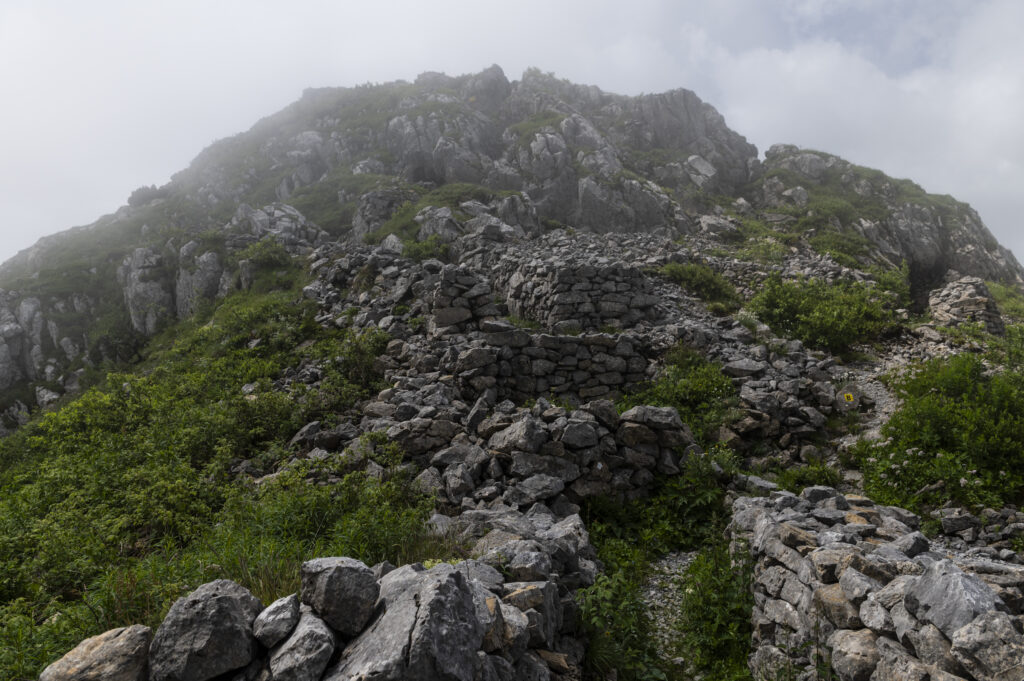
The Italians sent their elite regiment, trained for the Alpine battle field, the Alpini, who now faced on the Austrian army of mainly Czechs and Hungarians: young men who often hadn’t seen a mountain in their lives before, and whose military training was as rudimentary as their equipment. Not surprisingly, the desertion rate was as high as the death rate, and at one point all white handkerchiefs were confiscated and exchanged for colourful ones.
Außenhofer, whose morale was also declining in the run of the war, did however not approve of the Czech deserters. A learned Austrian, the soldierly values of patriotism, duty, obedience, and bravery were deeply ingrained in his thinking – planted especially by the strict Catholic school system that was run military-style and featured physical and humiliating punishment. Disease and cowardly death were regarded as weaknesses, as failures. The brutality of war made Außenhofer even more detached.
“Today another mis-hap. A Standschütz took the cable car from Corvosa to Stern; when entering the station, his head was ripped off. Went to the Gasthaus at night, always full of people there.”

The Gasthaus, the inn, Außenhofer mentions in his diary, is the Gasthaus Löwe in Galtür, which, by the way, is still operating to this day. Gasthaus Löwe was, like other inns, pensions, or hotels, where soldiers were accommodated when not serving at the front line. Ernest Hemingway, too, mentioned the Gasthaus Löwe in his short story “An Alpine Idyll.”
The American writer had arrived at the frontline in the final year of the war, in 1918, as a volunteer orderly for the Italian Red Cross, apparently in search of adventures, both amorous and heroic. His story about two Americans on a skiing trip doesn’t cast a favourable light on the Tyroleans. Hemmingway calls them beasts – but who wouldn’t, given a plot that involves a widower using the frozen corpse of his recently deceased wife as a hanger for his lamp? Who wouldn’t, given the merciless brutality of the war? But Hemingway only arrived at the very end of the war, and maybe the village people he describes were so callous and detached because they had been tested by hunger and loss of loved ones for four long years. For Austrians, the war was not an adventure.
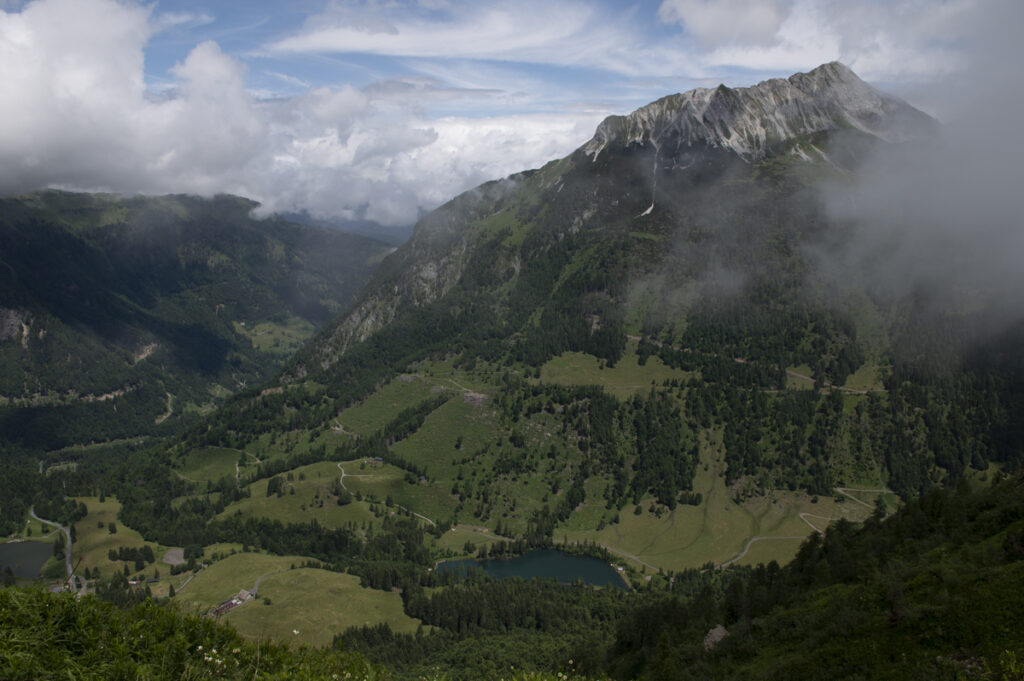
But, maybe, Hemingway had a point. The archaic societies of the inaccessible Alpine valleys were notoriously taciturn and rough, a demeanor that seems to come with the rawness of the scenery. Tyroleans were incomprehensible to the Viennese as well, both in their dialects and manners, and so held considerable exotic attraction, as was the case for Austrian writer Robert Musil, also stationed at the Gasthaus Löwe.
End of July. A fly dies: Worldwar, he wrote in his diary on July 28 1914, the day of the declaration of war. Like most upper-class men in the monarchy, Musil had attended military school and therefor held the title of officer. He immediately signed up for the front – albeit benefiting from an officer’s privileges: better pay, better accommodation, better food rations.
War. On the mountain top. In the valley peaceful like a summer holiday. Behind the barriers of the patrols one walks like a tourist, he wrote in 1915. The combination of the overwhelming beauty of the Alps and the adventure of war must have made for an intoxicating cocktail. Or was it rather his love affair with a certain “Gretel” from the village that impressed Musil, whose experience at the front differed so wildly from that of an infantry soldier. Yet, the ongoing cross-fires soon wore him out.
Big projectiles, not too high above our own posts, their sound making the air swell into a rumbling, a roaring with a metallic timbre. So it happened yesterday at Monte Carbonile, when the Italians were firing from the Cima Manderiolo to the Pizzo di Vezzeno, and the Panorotta above us to the Italians. It made the impression of an eery uproar within nature. The rocks were rumbling and roaring. The feeling of an evil futility.
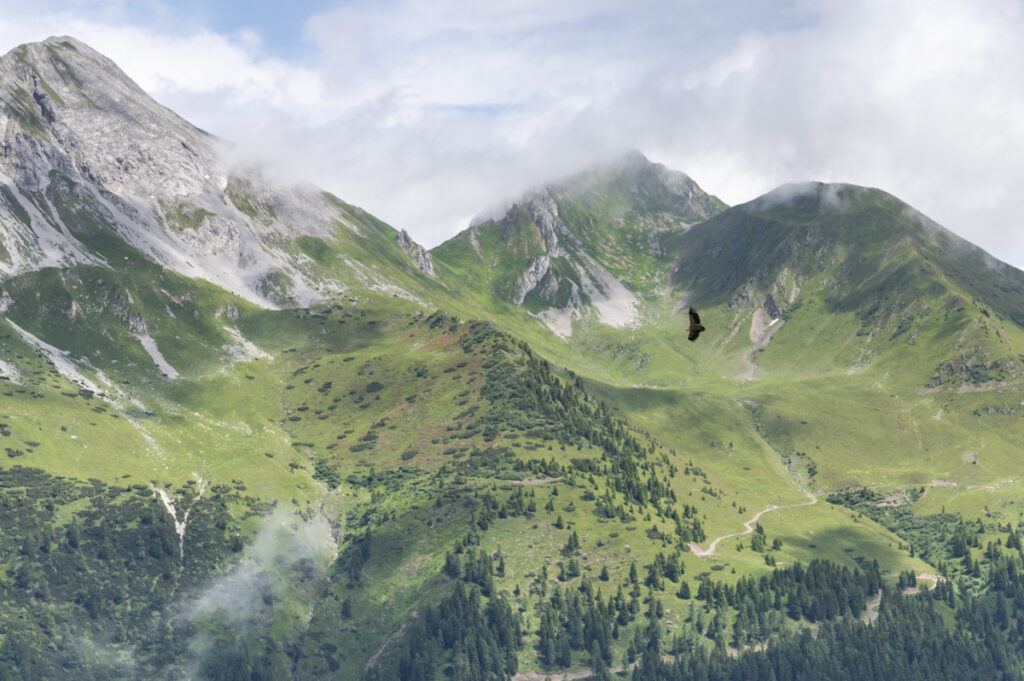
Musil survived and went on to become a major European writer. He was however one of the very few writers dispatched as soldiers to the front. Contrary to other nations, who lost a whole generation of writers on the battlefields, the monarchy was aware of the importance of artists to boost morale within the population. Two institutions were established for writers to dodge the draft: the Military Archive, and the Pressehauptquartier, the military press headquarters, the latter a euphemism for propaganda, where acclaimed writers like Stefan Zweig, R.M. Rilke, or Hugo von Hofmannsthal eked out their lives. In safe distance from the front, and with varying degree of enthusiasm, they fabricated their eulogies.
“Victories, only victories; you never read of defeats,” infantry soldier Außenhofer wrote in his diary. He never experienced any heroic victories the field newspapers reported. Miraculously, Außenhofer survived the war, unlike nine million soldiers, unlike the emperor, who had passed away in 1916, and unlike the once proud Austro-Hungarian Empire, which disintegrated in 1918.
In local folklore, a salamander, is associated both with rain and fire, and the sky above the Kleine Pal is indeed growing heavy with dark clouds that threaten to bring both. But for the love-drunk salamanders, the trenches are deserted now. The Kleine Pal has become an Open Air Museum, where tourists can inspect the posts, the trenches, the caves, and even the old, rusty cable cars. But the museum, which is free of charge and not supervised, is scarcely frequented. The hike-up is steep and hazardous, so the signs at the bottom of the mountain warn, and should only be attempted in proper hiking gear and in perfect weather conditions. High up, seven Griffon Vultures are circling. Once hunted into extinction, they are a thriving, re-introduced species. Some Alpine swallows are plunging and rising, a marmot whistles in the distance. These are the only sounds. No rumbling, no roaring of rocks. Descending on the other side, one will be in Italy. No passport is required.


